Drooling over Audrey Hepburn and her Givenchy wardrobe via Funny Face.
PS - Bonjour, 1957 Paris!
❥This email may be truncated in your inbox. To make sure you are reading the entire post, please move yourself along to a web browser!
I’m ashamed to admit that I had never watched any Audrey Hepburn movies until this weekend, when I finally decided it was my time to see Funny Face. Images of Audrey in this film were popping up everywhere for me as I was sourcing vintage clothing and accessories for my upcoming big day, and as I was sharing my Paris recommendations. As soon as the title sequences began, I felt myself beaming—this movie is right up my alley in so many ways!
Here are some of my enthusiastic thoughts while watching the movie. There are some visual spoilers in here, but I’m not giving away any major plot lines because it’s worth watching! Keep reading until the end to find more about Alberto Giacometti’s sculpture, Harper’s Bazaar Editor Diana Vreeland, and other related notes.
The credits list Edith Head as the costume designer, Givenchy as the designer of Audrey’s wardrobe in her Paris scenes, and Richard Avedon for the titles. Plus, it dug up my teenage fantasies of working in fashion journalism during the era of How to Lose a Guy in Ten Days, 13 Going on 30, and The Devil Wears Prada, but perfectly mixed with the visuals of the late-1950s that I adore.
Funny Face follows Quality magazine in New York City and its direct, dramatic Editor-in-Chief, Ms. Maggie Prescott. Harper’s Bazaar’s EIC Diana Vreeland is said to be the inspiration behind her character. Her opening line, after smacking a magazine down onto her desk: “I simply cannot release this issue the way it is!” She continues her critique: “A magazine must be like a human being. If it comes into the home, it must contribute. It just can’t…lie around. A magazine must have BLOOD and BRAINS and PIZZAZZ! This is just paper.”
She begins drawing uppercase D’s on the magazine’s layout pages. “D for down, D for dreary, D for dull and depressing, dismal, and deadly!” Instead, the commanding woman says the next issue is about the color pink, and “clothes for the woman who isn’t interested in clothes.” Doesn’t sound so dreary to me, especially as the characters break out into skippy songs.
This leads to something that I’m personally really thrilled about. In the next scene, a model is posing next to a faux Giacometti sculpture: “Maryanne, now give me a looong look. Longerrrr!” the photographer cries, as the model stretches her arm upward to the ceiling.
“Loooongerrrrr!”
The photographer is upset with her performance and gives her a pep talk: “Keep in mind that you’re a woman who thinks…You are in the Museum of Modern Art, Mary. Deep, Mary. Profound, Mary. You have come across this statue and it says something to you because you are an intellectual. Always thinking. What, are you thinking?”
She puts her hands to her chin, trying to channel the thoughts of this so-called intellectual, rolls her eyes, and says, “I’m thinking this is taking a looong time, and I’ll never be able to pick up Harold’s laundry.”
I studied art history in university, with a focus in the modern era, so this is an insanely perfect scene. Well—minus the doing laundry errands for your husband part.
I’m also shocked because the set design has weirdly specific elements that I recognize from the Eames Office during the same era. Maybe it’s an insane coincidence? It’s even more clear to me now that I’m the niche target audience for this film.
To make Maryanne look smarter, they head to a bookstore—“one of those sinister places in Greenwich Village.” Upon arrival, the editor describes it as “movingly dismal,” (more D adjectives) and seconds later, we are introduced to Audrey Hepburn’s character, Jo Stockton. She hates the “synthetic beauty” of the fashion industry and says that if she could go to Paris, she’d go only to see a lecture by a professor she idolizes.
After thinking about a new spin for the magazine, they try to kidnap Audrey after she delivers an order of books to their office. Her character is painted as a grotesque, weird, little creature. We’re supposed to believe this, despite her wearing a chic, black scarf over her hair and looking stupidly beautiful.
She hides out in a photo dark room and sees a photo taken of her in the bookshop. Maybe she IS model material! She willingly agrees to go to Paris. It’s insanity to me that the movie is called Funny Face as an ode to her being not-so-attractive.
Off to Paris we go!!!
I love seeing the little floating plane above The Seine, the scenes of the city in this era, and (what’s probably just a set of) Orly Airport.
They are flying TWA! Nerdy architecture side-note: if this were filmed a couple of years later, they would have been flying out of JFK’s Eero Saarinen-designed TWA Flight Center.
The three main characters break out into a song about being an American tourist—galavanting around Paris, admiring the landmarks, and waiving emphatically to Parisians. This is the internal energy I have in Paris, but try my best to calm myself down externally. Except for a night with friends when I yelled down to boats along The Seine: “Bonne soirée, tout le monde !” and people—surprisingly—waived back at me with smiles attached to their faces! They were probably Americans, too.
Miss intellectual Jo Stockton is nowhere to be found when it’s time for her big haute couture fitting. She’s in an underground bar/cave chatting with French men about her philosophical wonders.
When the magazine staff finally gets her to cooperate, she looks absolutely ETHEREAL.
And so does Paris!
And them together!
I’m swooning. You have to watch in order to find out what happens, and to see the collection of gowns and the ease at which Audrey Hepburn daintily wears them.
You can watch the film here for free. Have you seen it yet?
Related Notes:
If I haven’t convinced you enough, here’s Vogue on “Why Funny Face should be on your to-watch list.”
A meaningful interview with Diana Vreeland in 1977 about fashion versus style.
Some bits:
“Style is a word that has recently been taken up, you know. Before, people only said FASHION.”
“In Europe, there’s a little more snap in the air. The clothes are a little bit more attractive. More pizzazz.”
“The world lives between one war and another war.”
“The only thing that brings us forward is science, not clothes.”
As The Met’s fashion consultant, she faintly hints at The Met Gala theme of 1977: “A Treasure Trove" which explored Hollywood and the clothing collection of Vanity Fair.
I could spend hours admiring MoMA’s online database of Alberto Giacometti materials. If the set stylist had the internet in 1955-57, I’m sure they would have been doing the same. Although it looks like they did their research! In a 1954 MoMA press release, Mrs. John D. Rockefeller is listed as the donor for this Giacometti sculpture, Man Pointing.
Speaking of thinking pink, this video of Lunar Rose Costuming pleating a hot pink-striped taffeta is mesmerizing.
xx
Love to you and your funny, sunny face,
Kelsey Rose





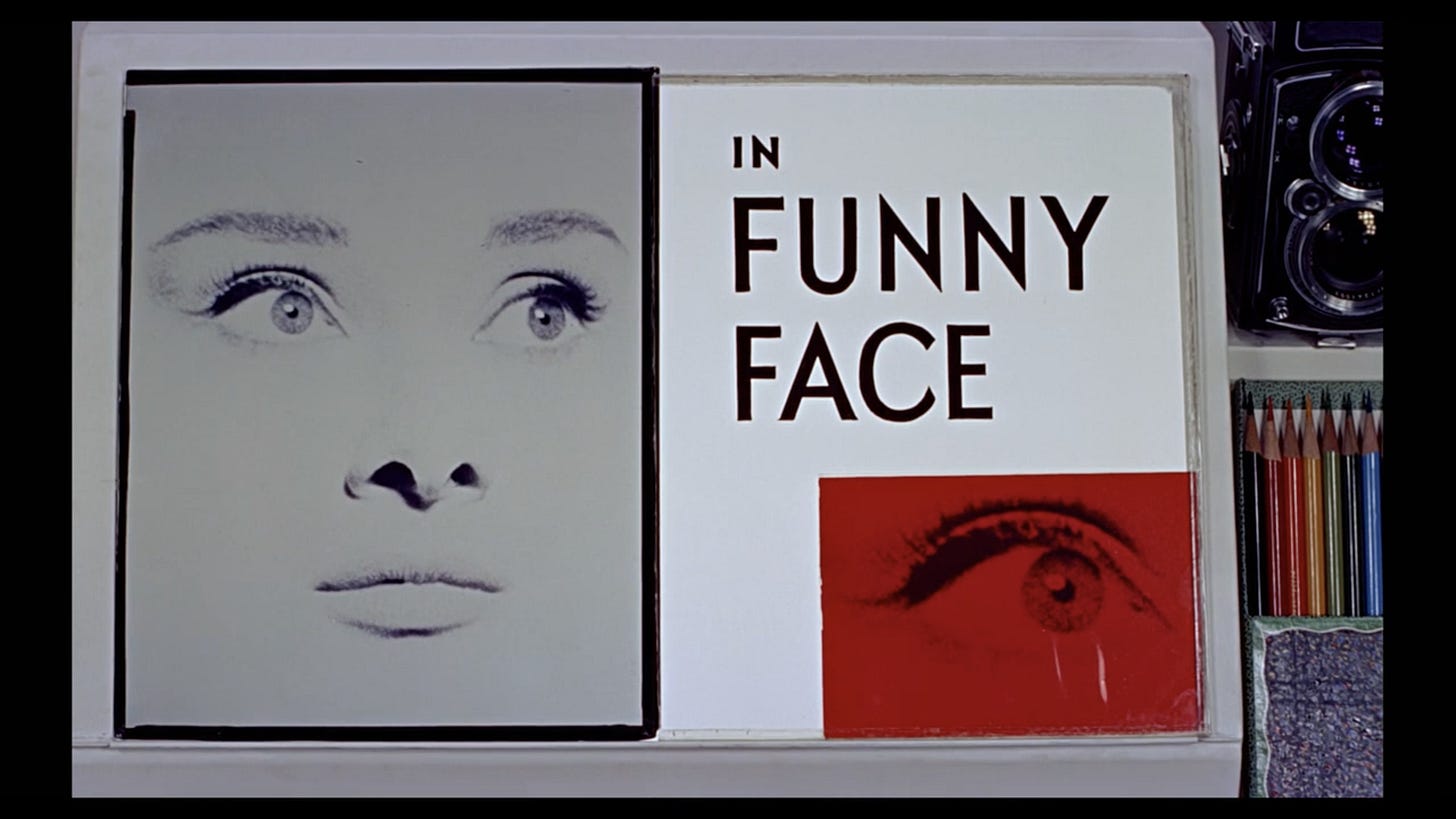
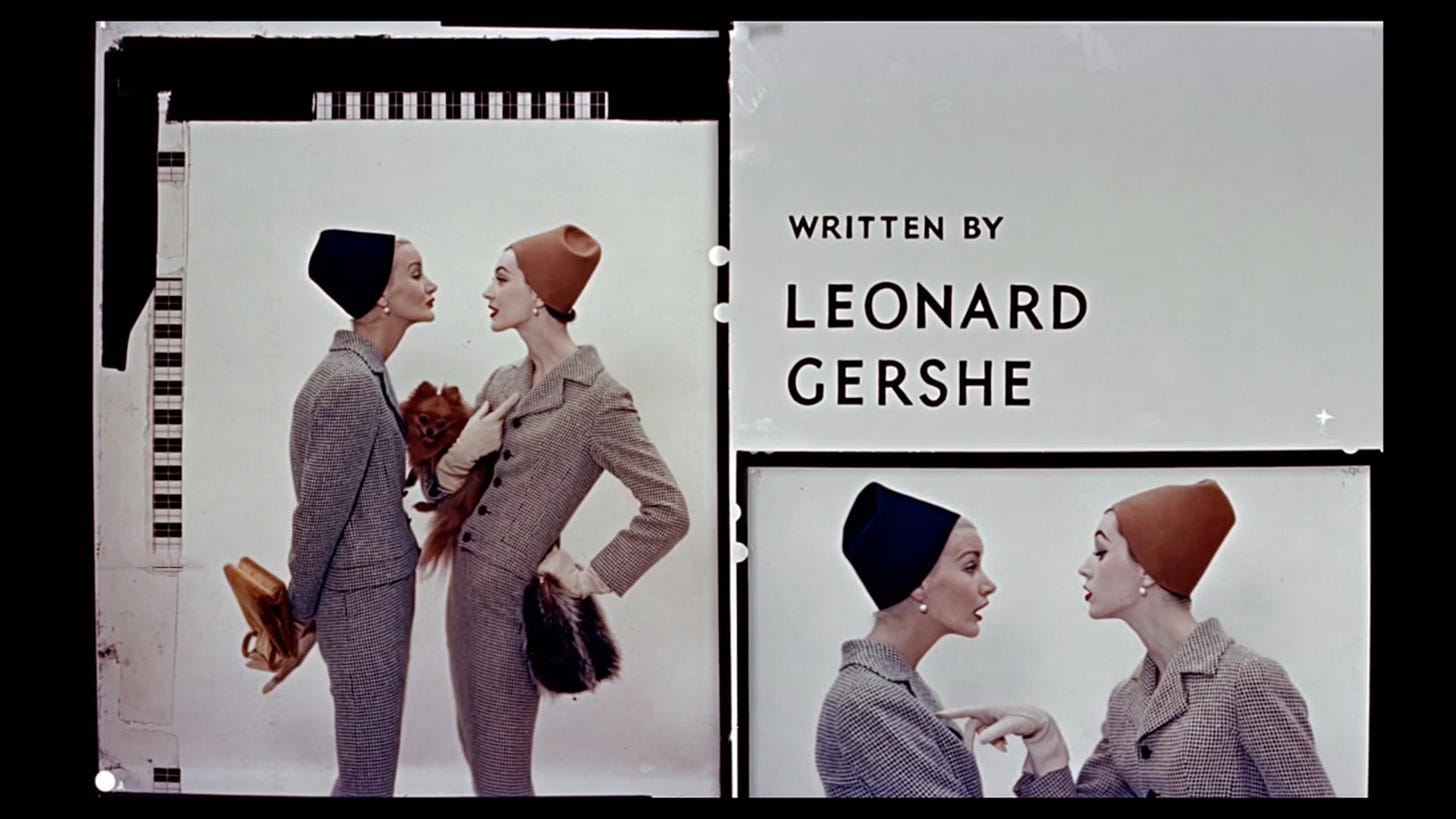
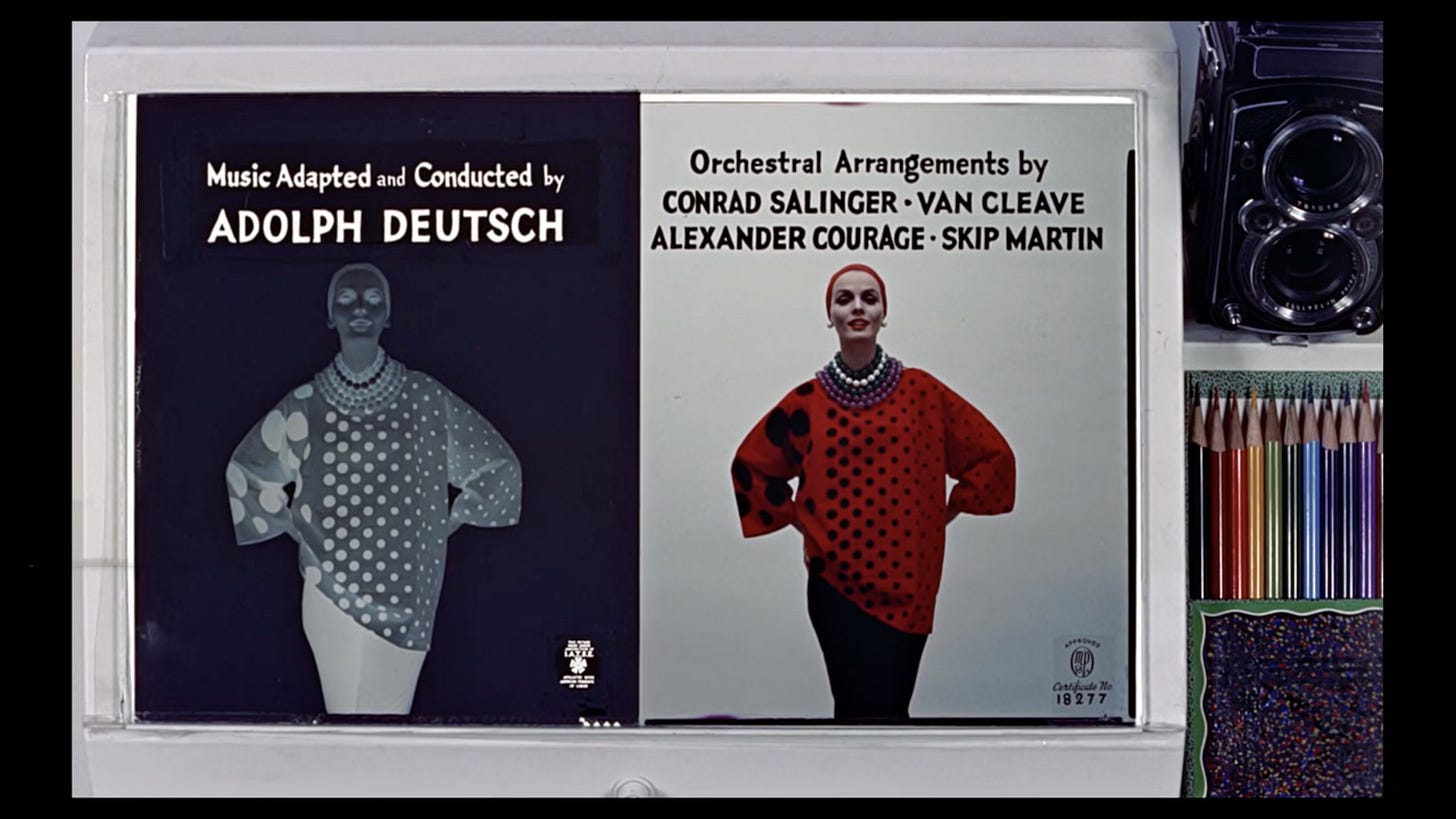
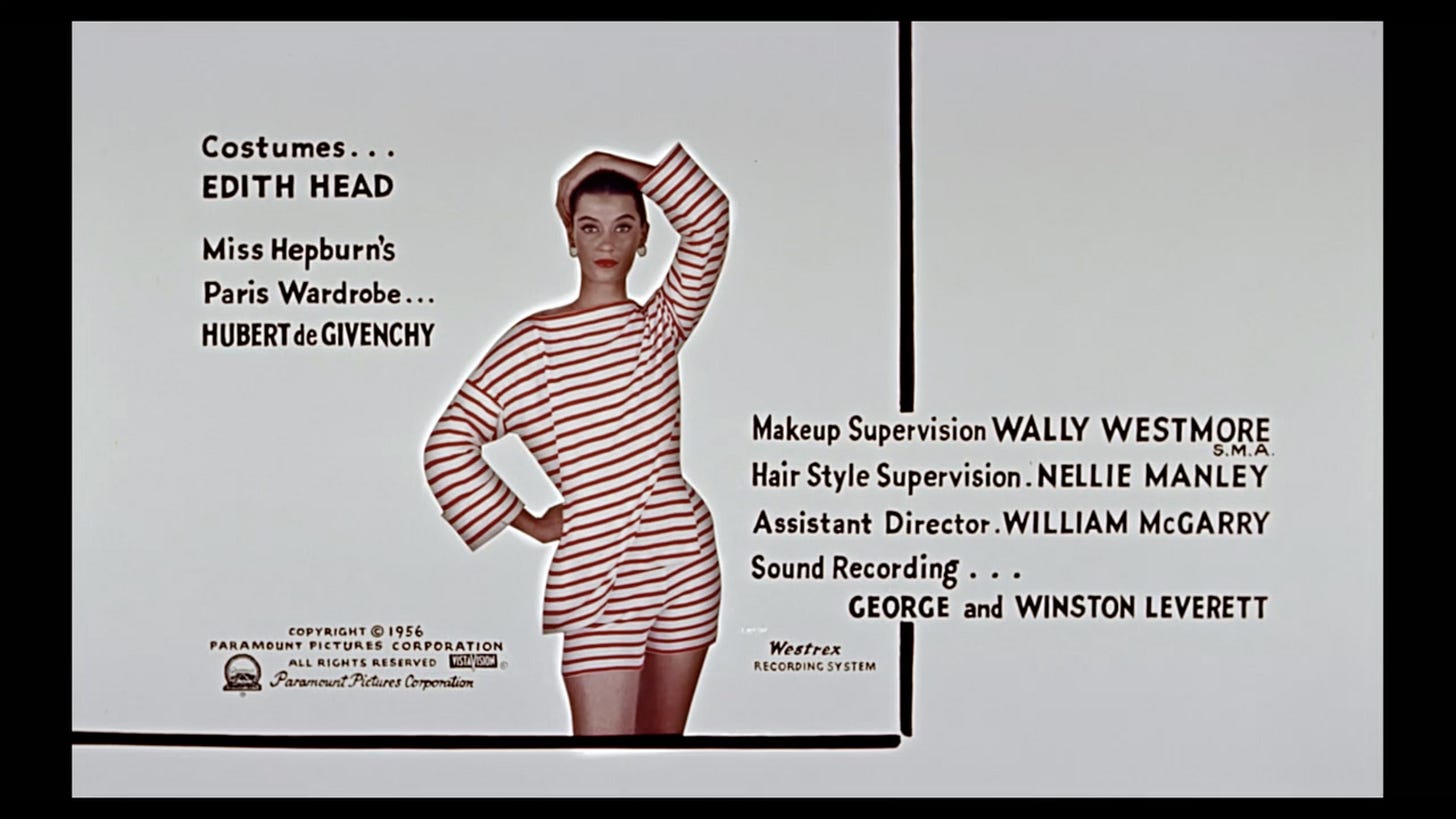
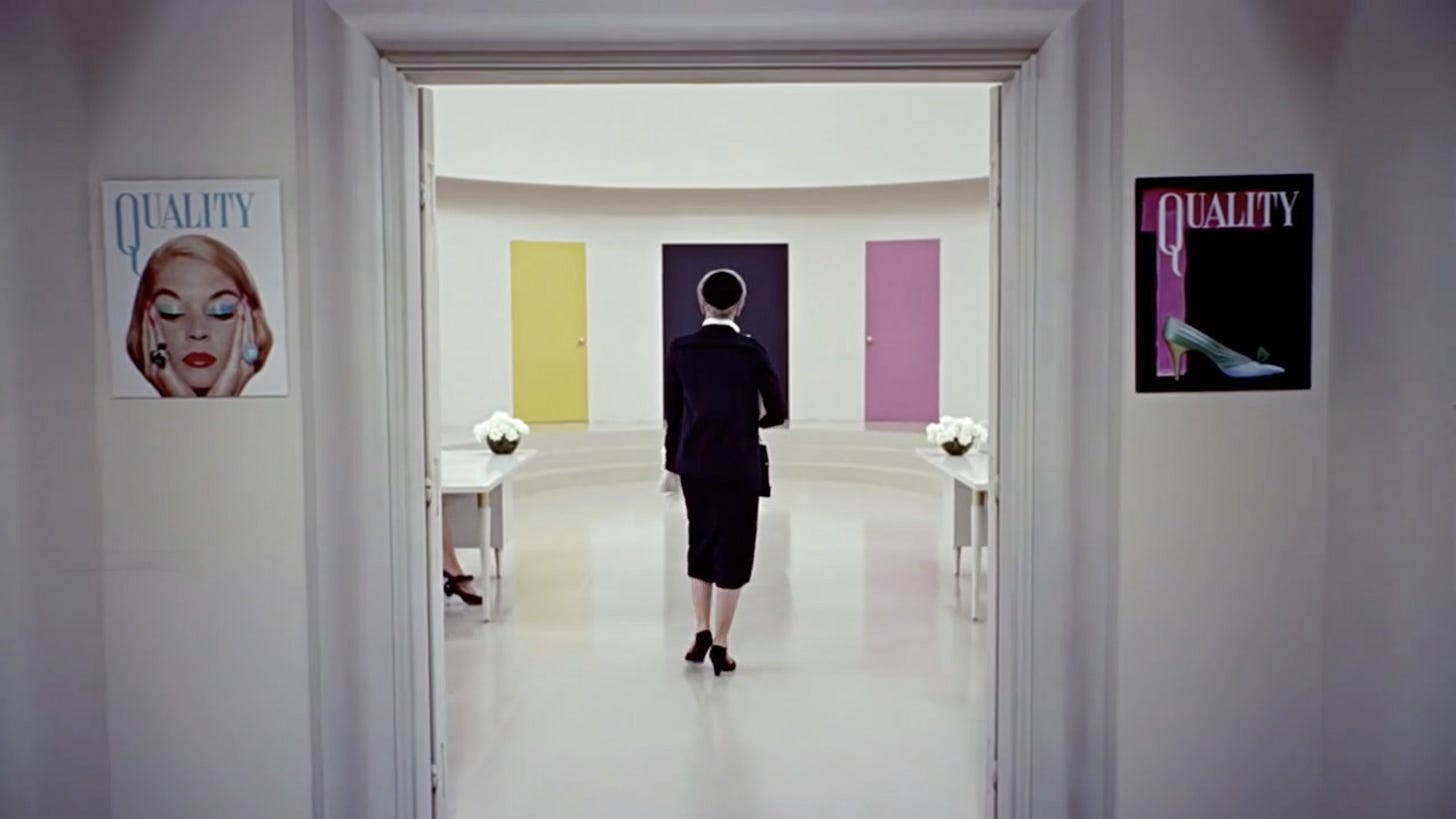
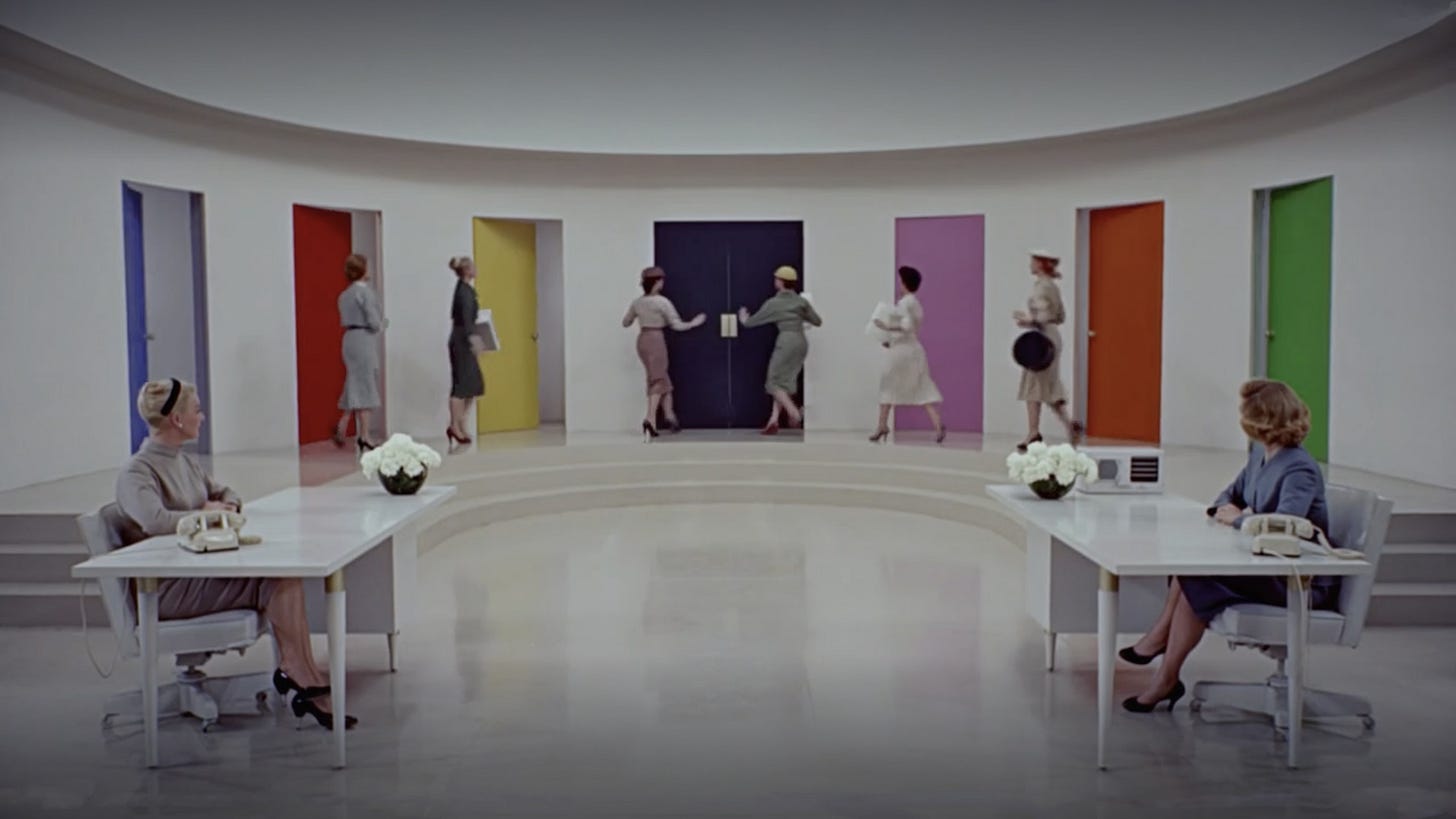
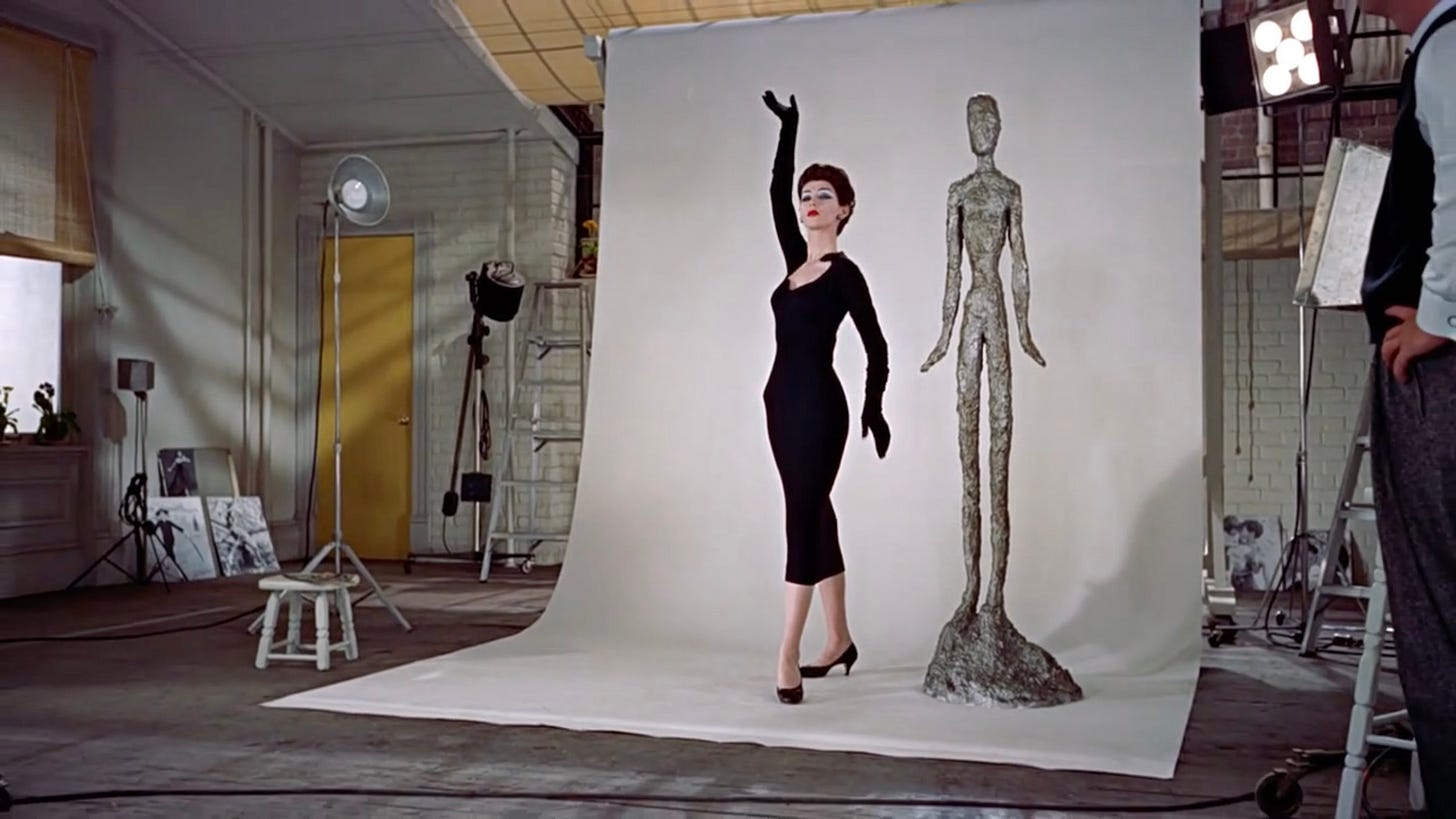
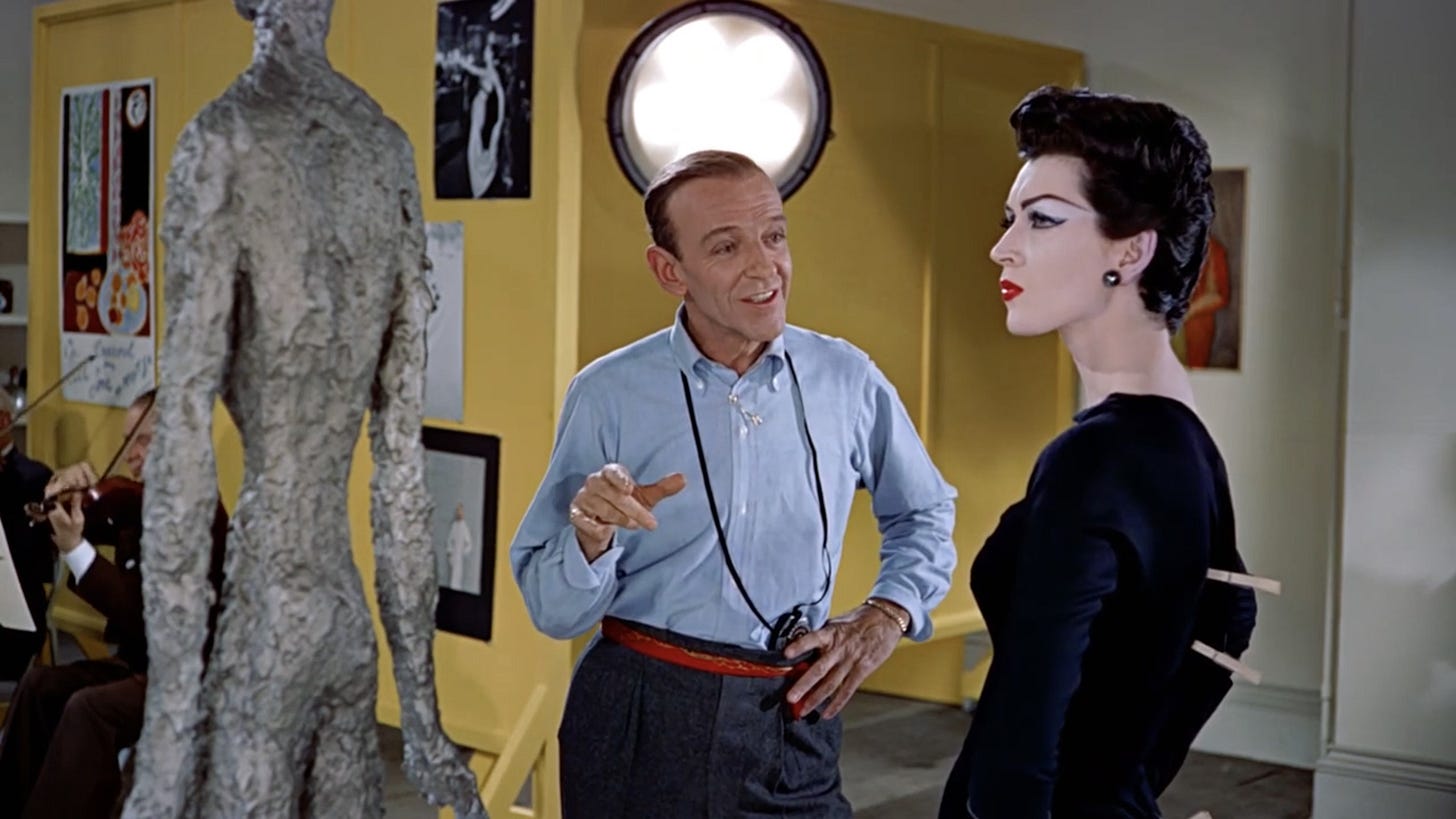
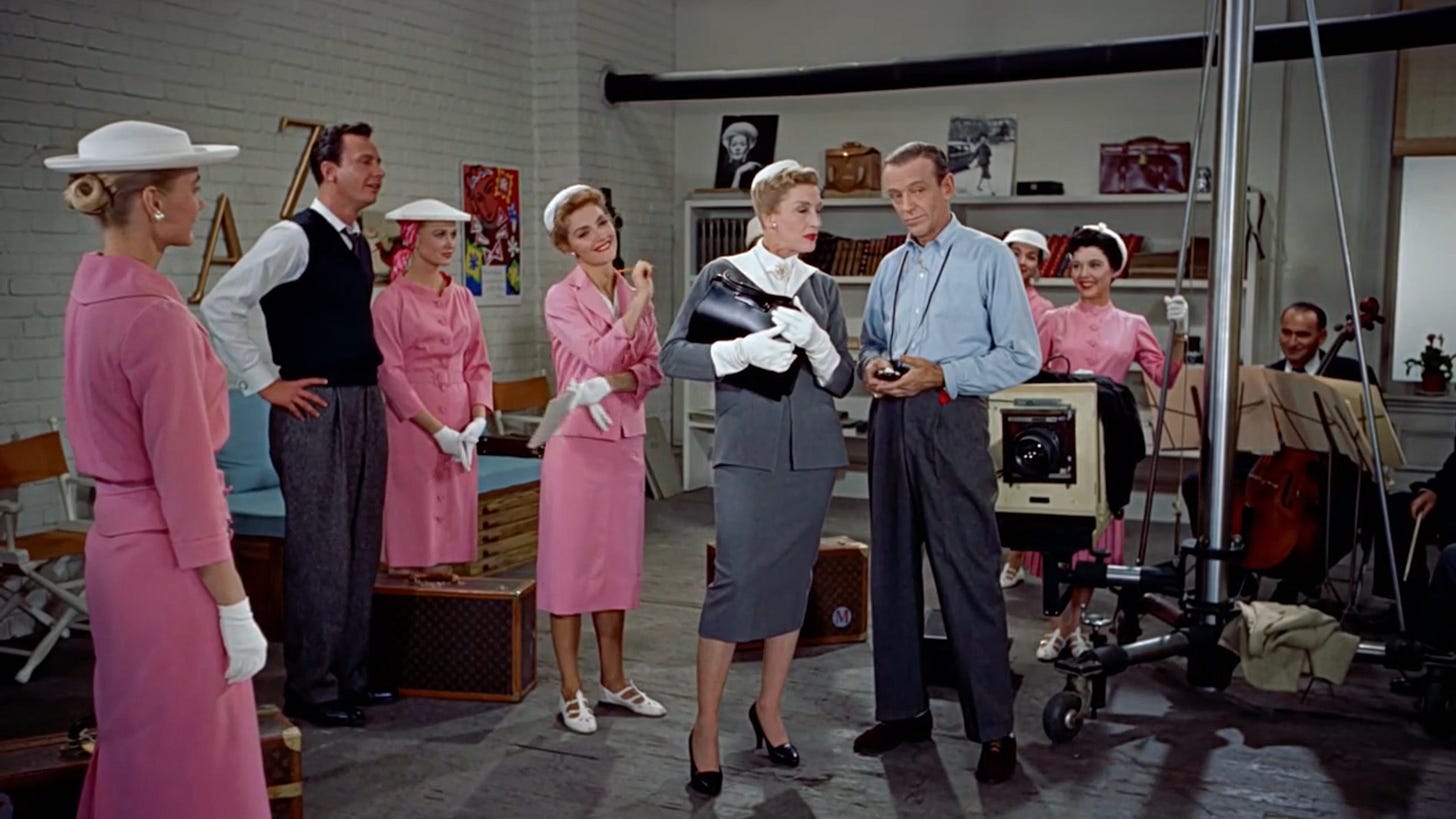
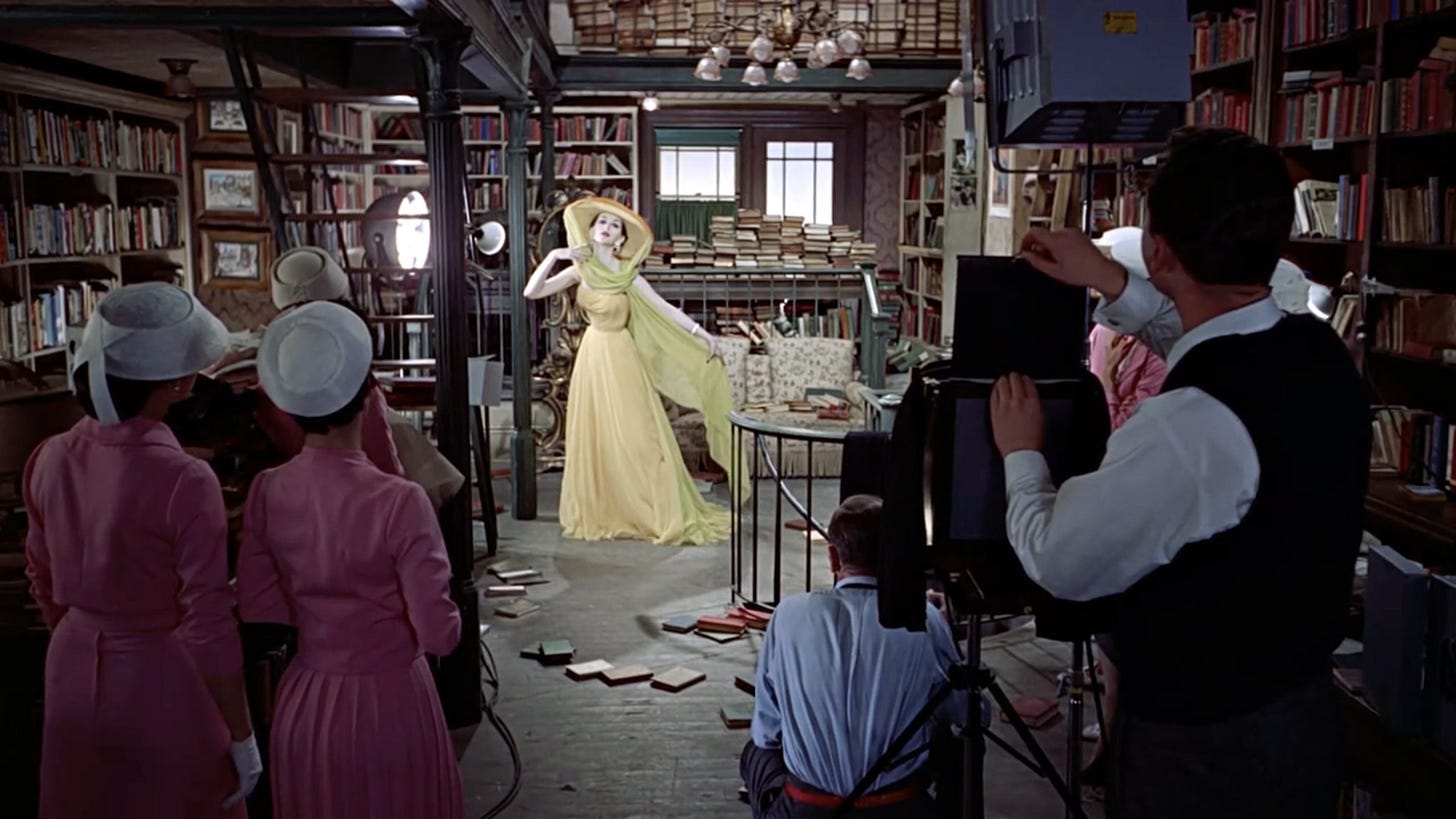
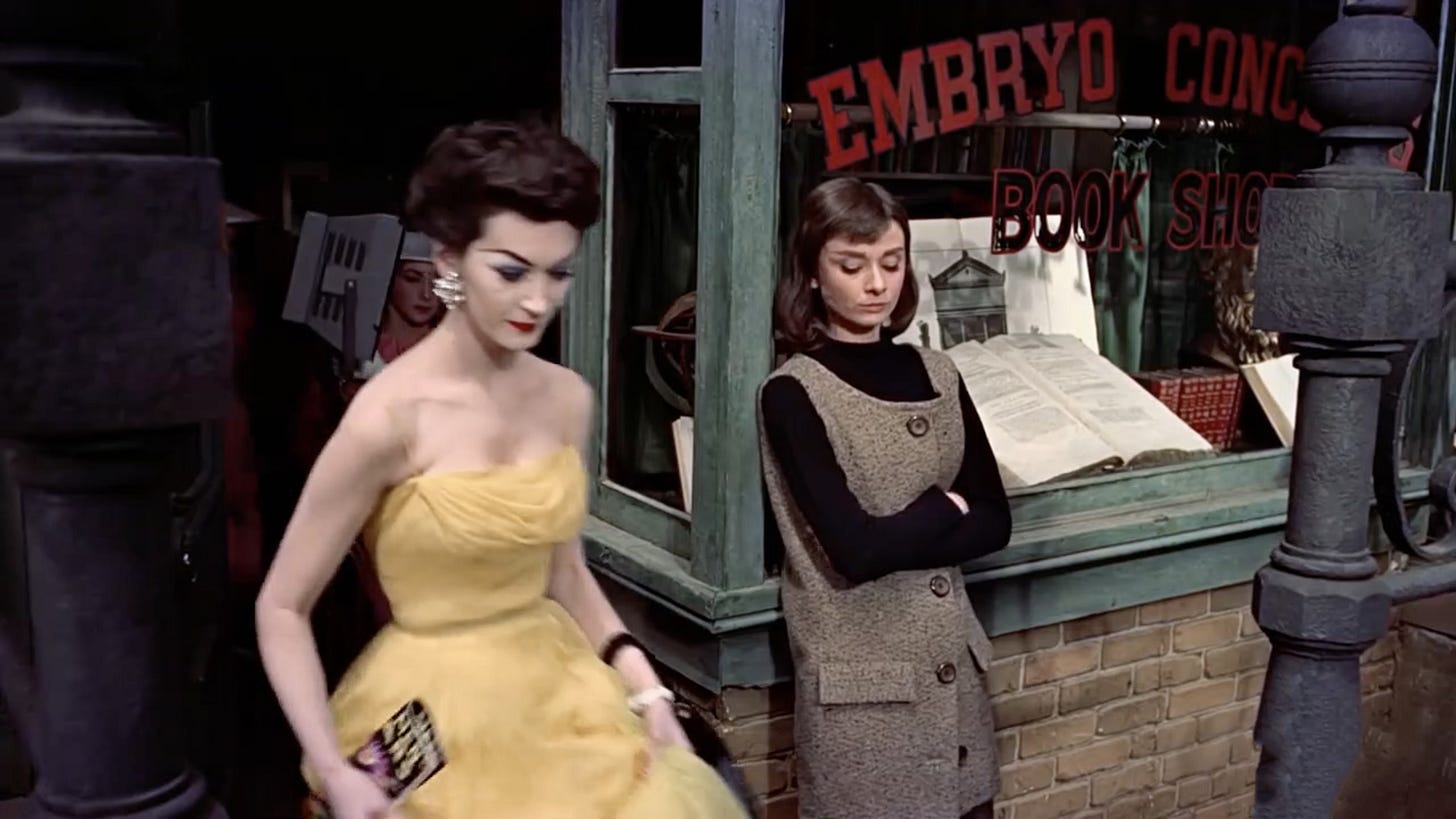
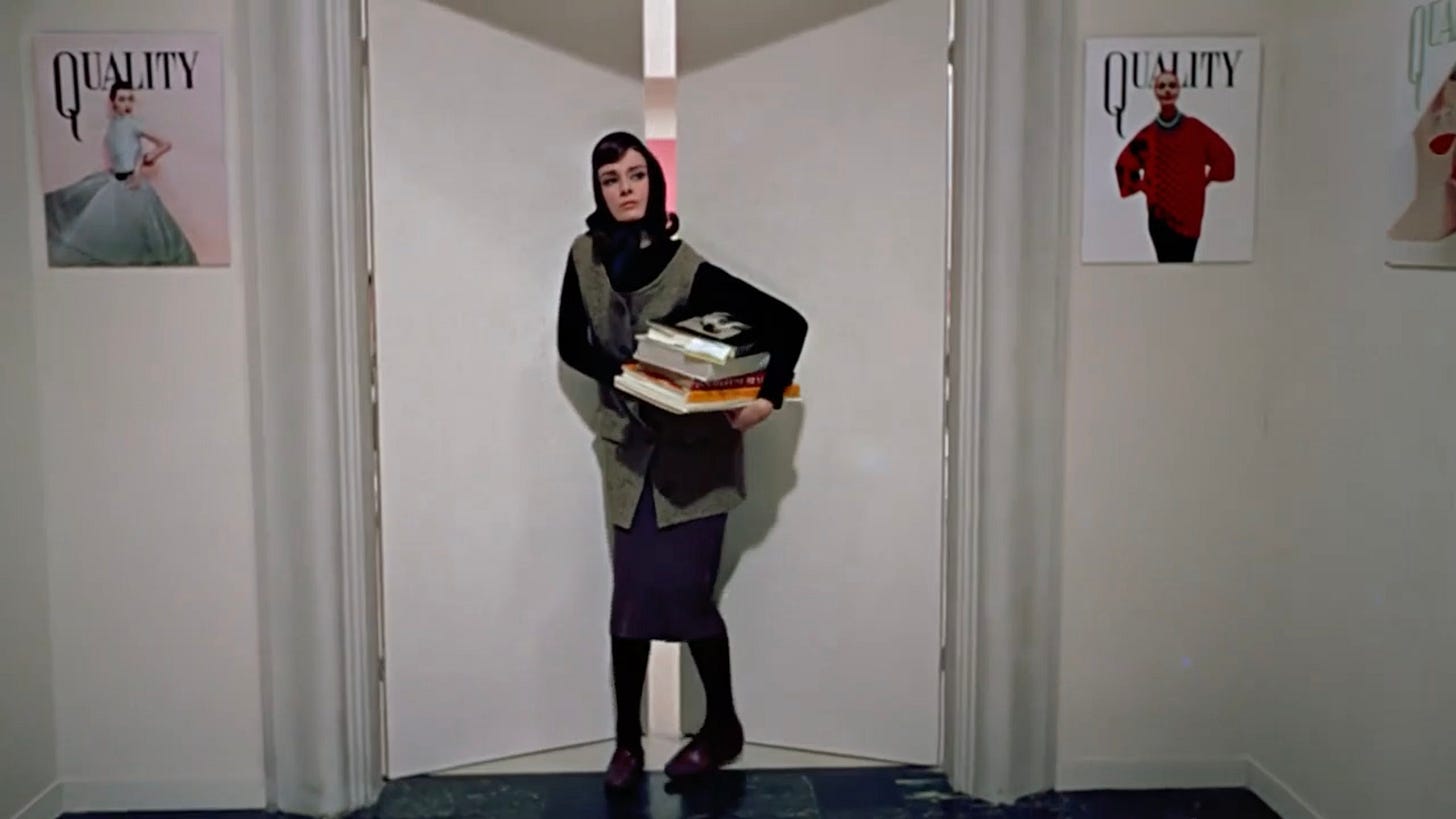
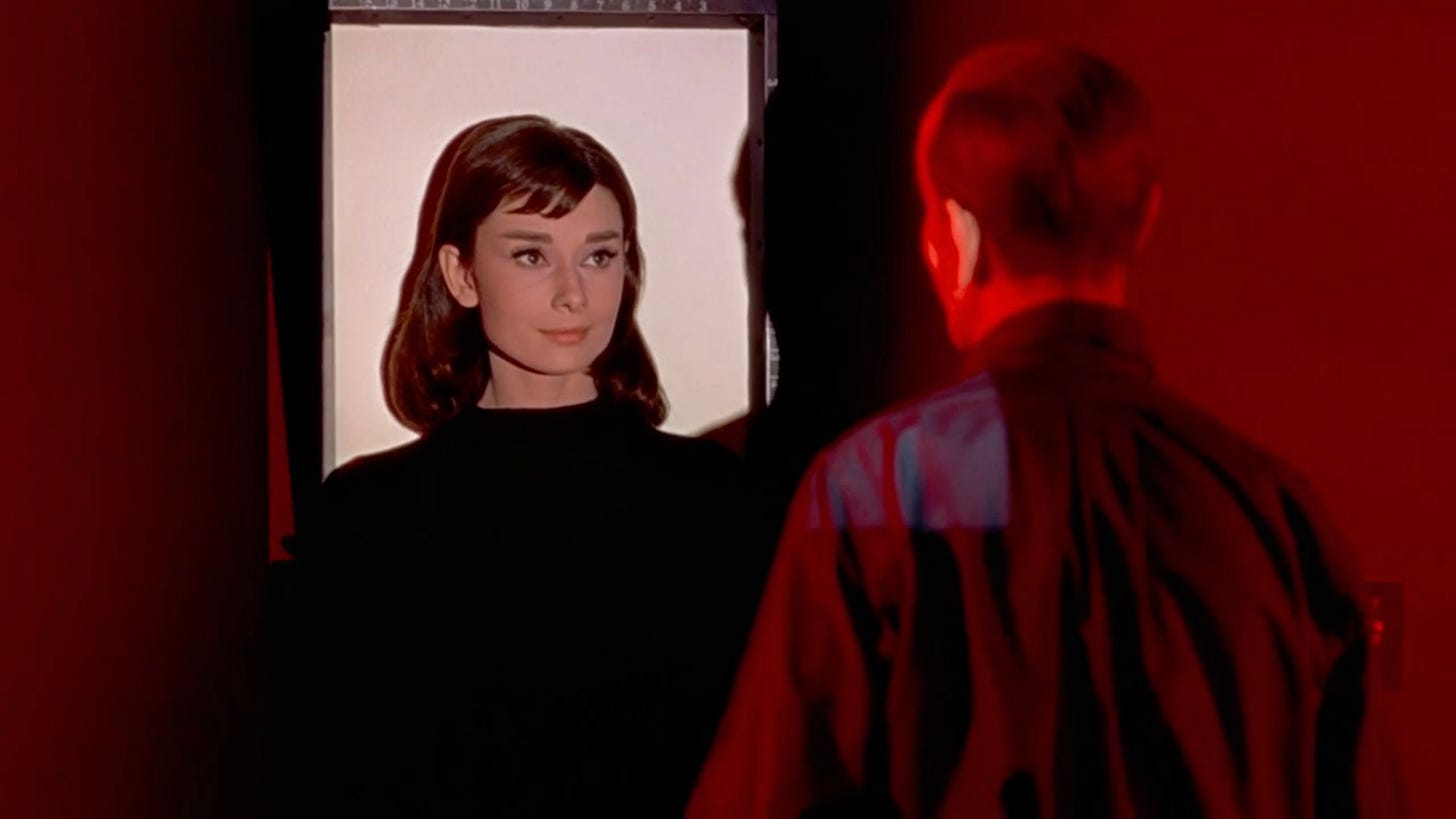
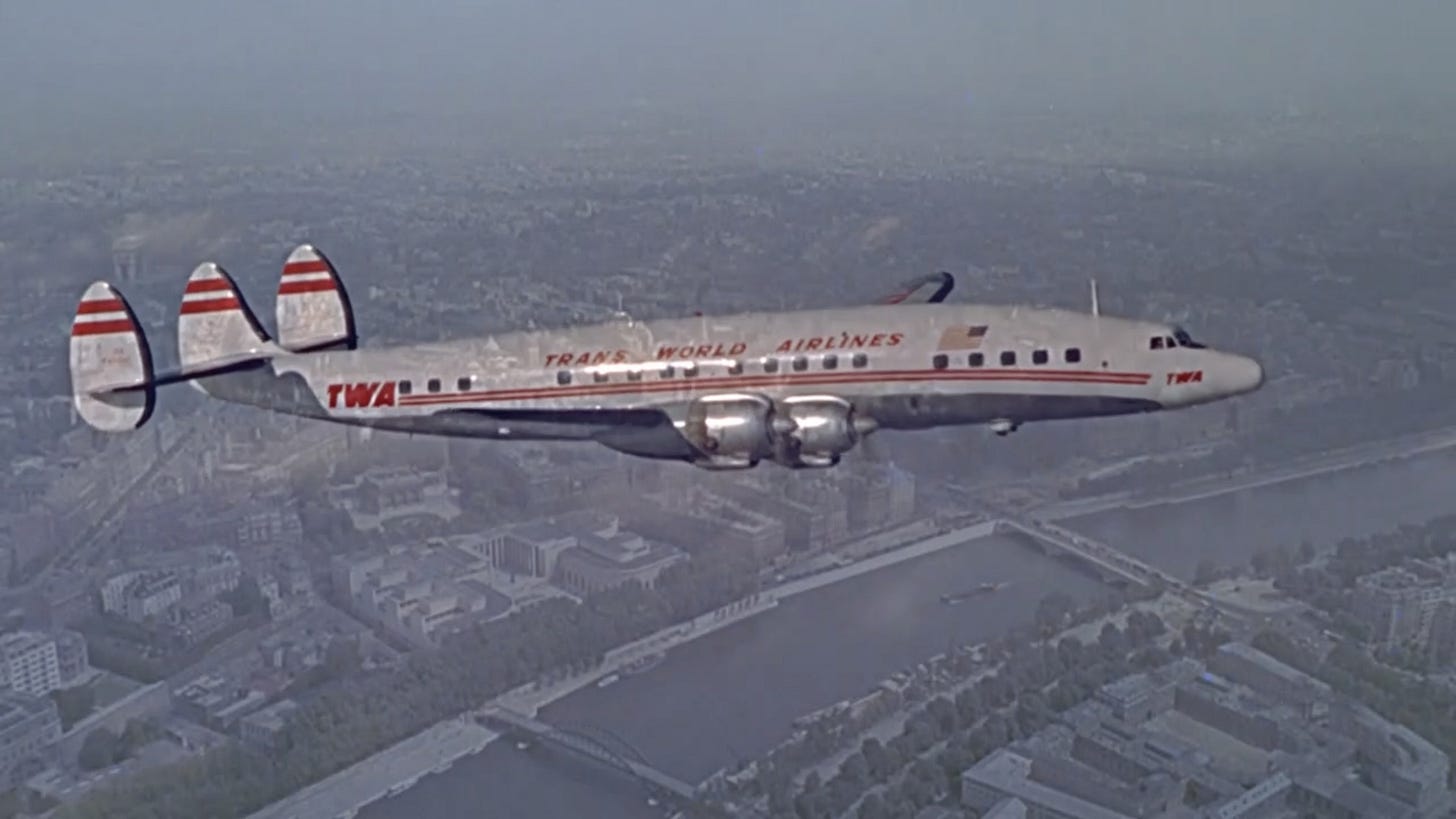
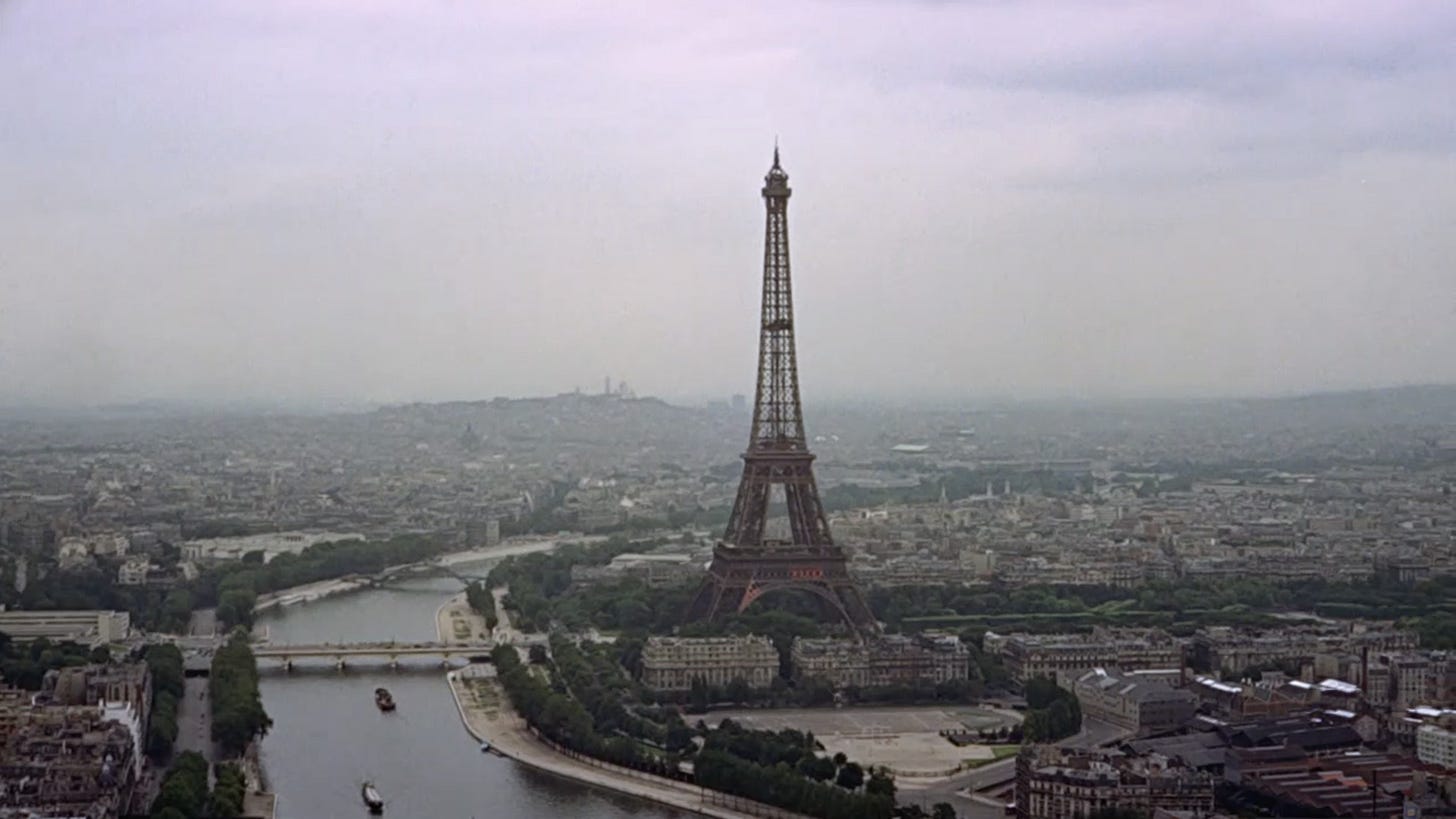
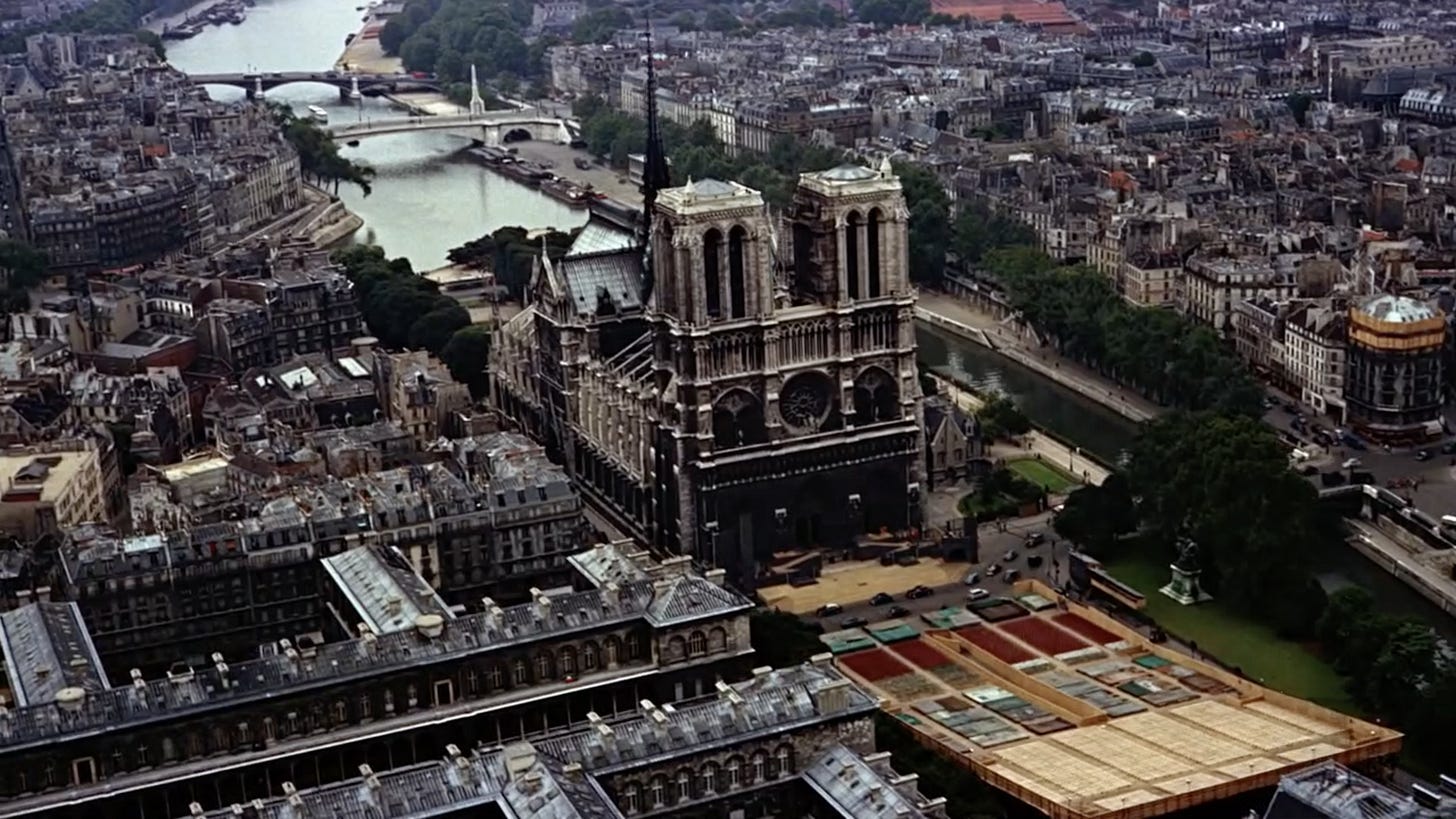
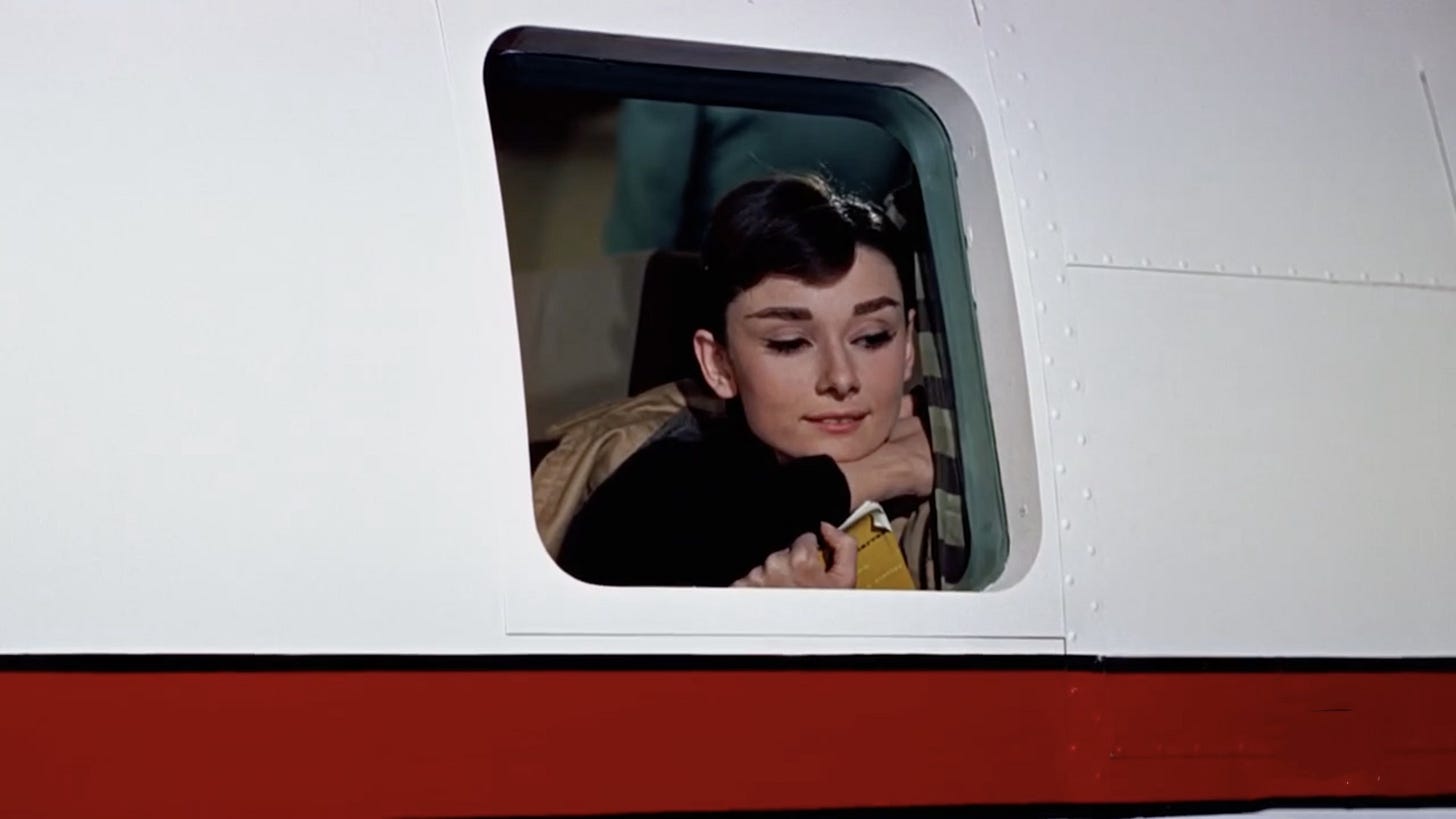
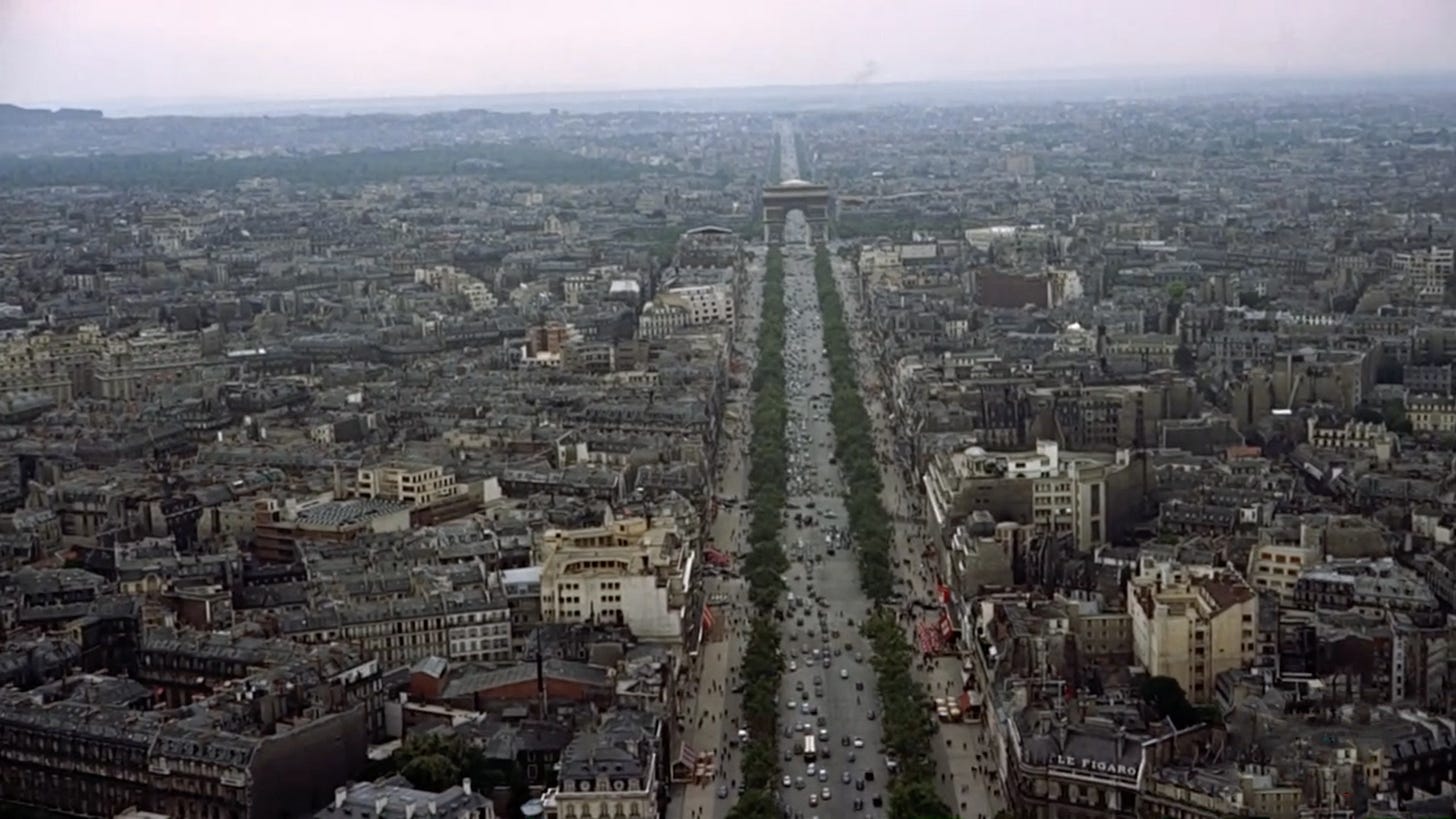

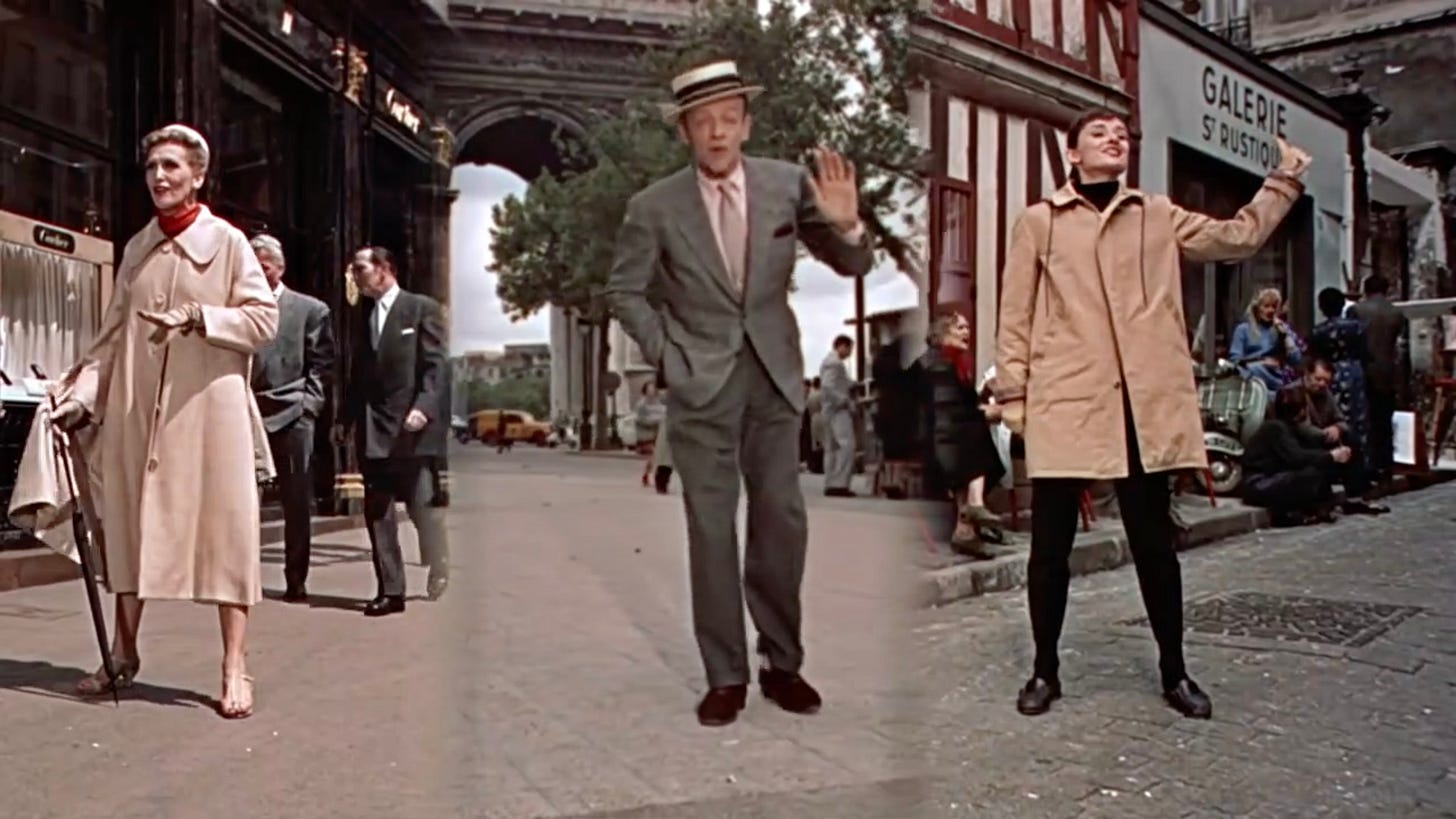
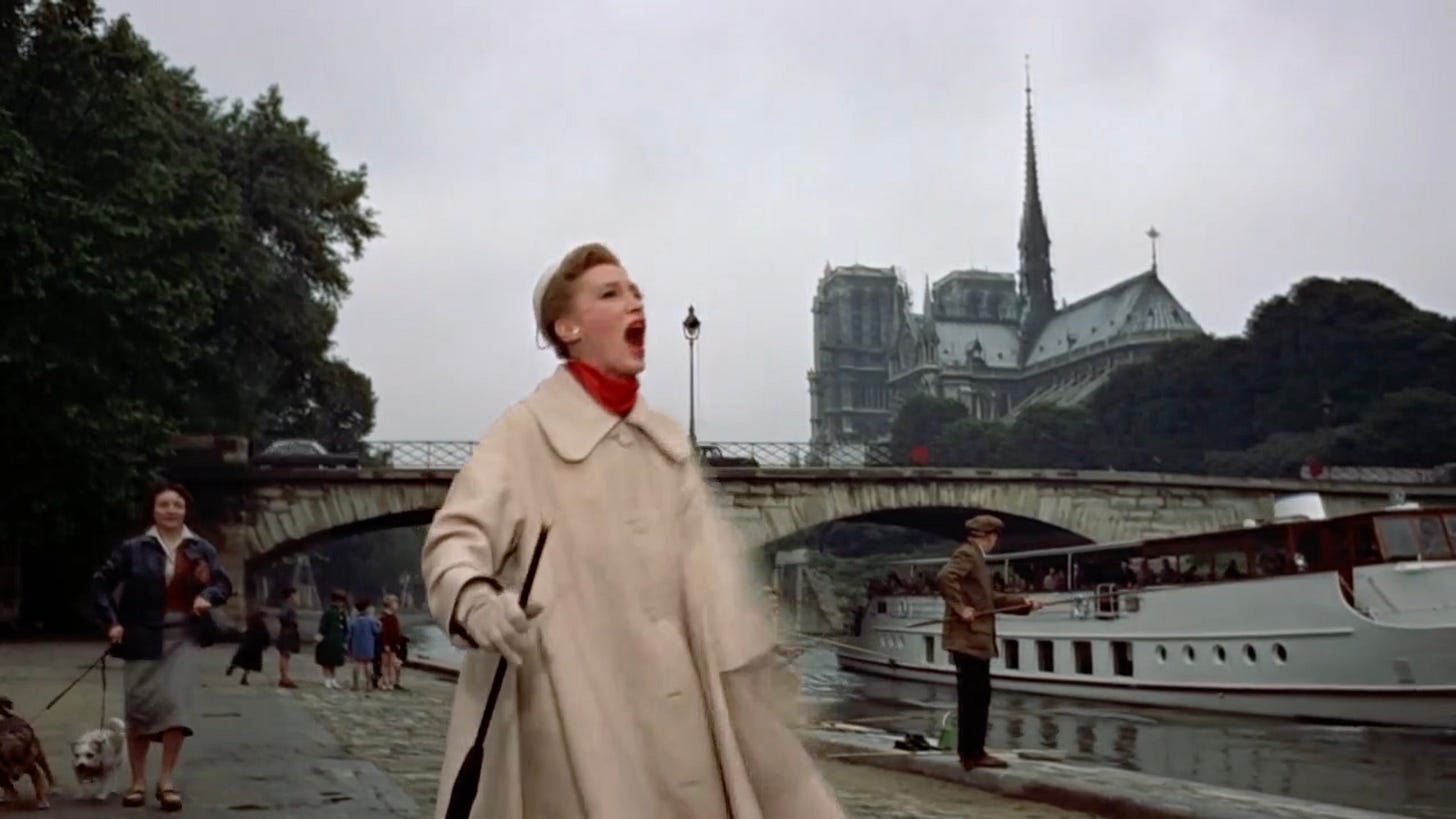
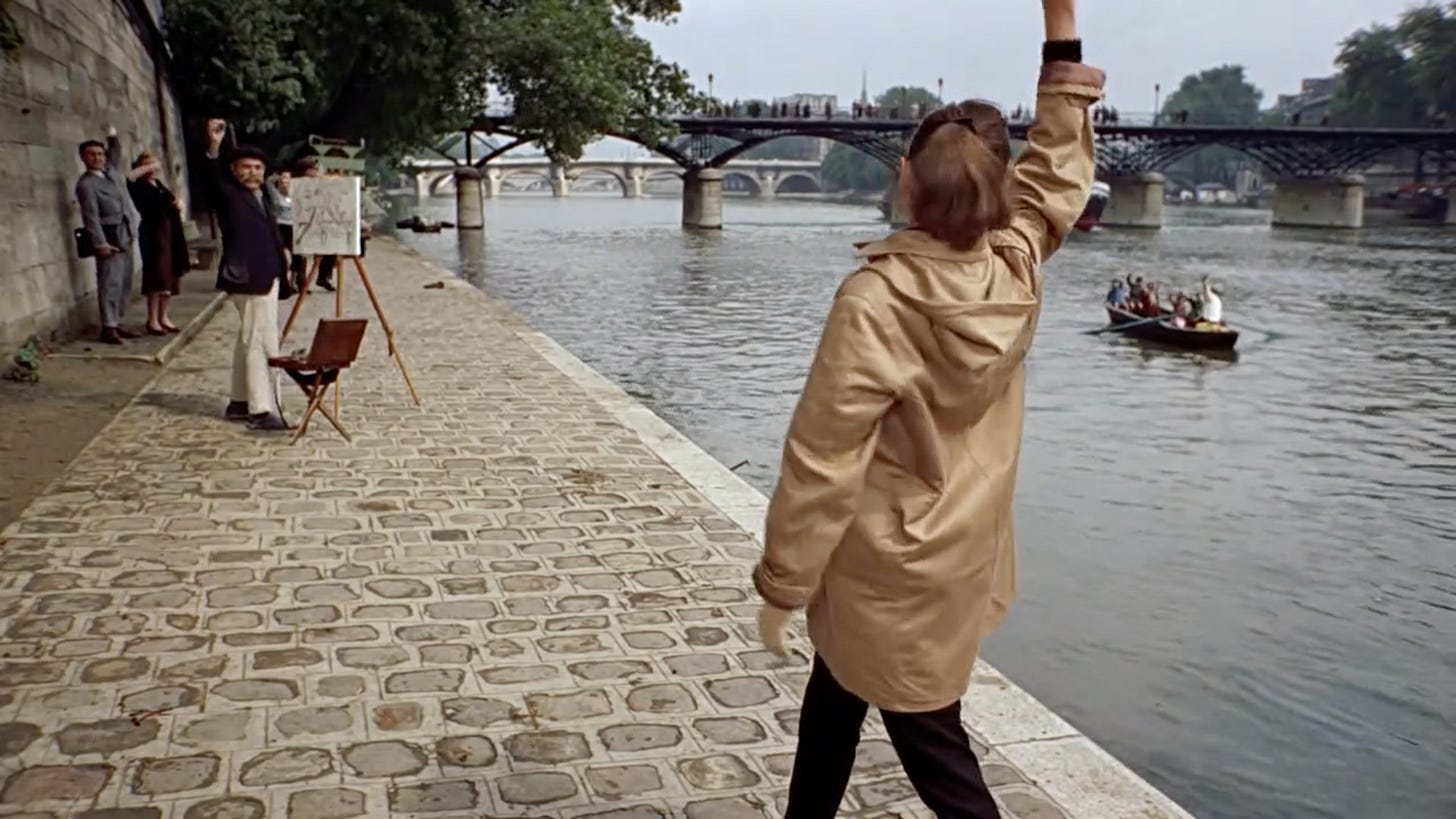
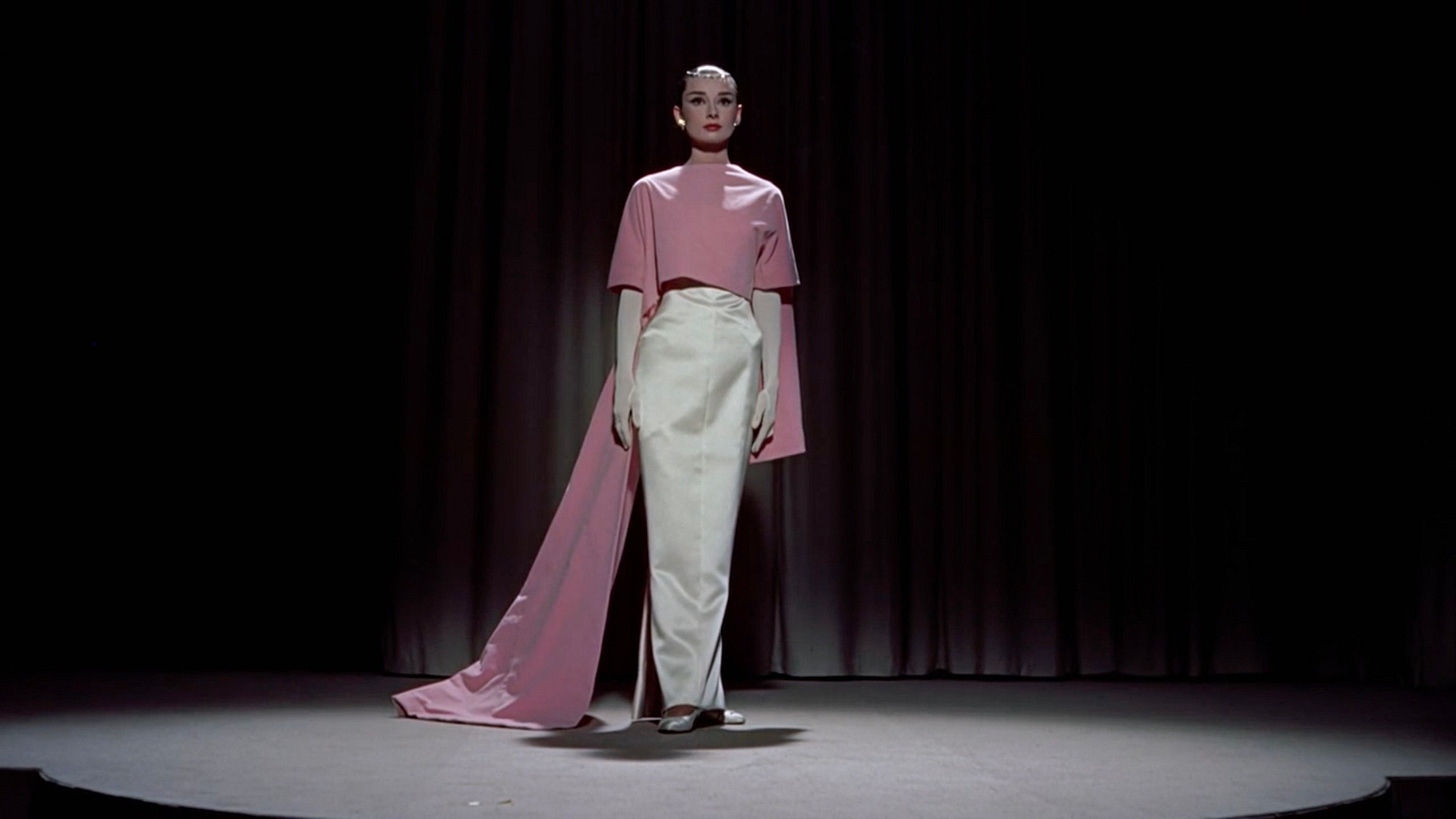
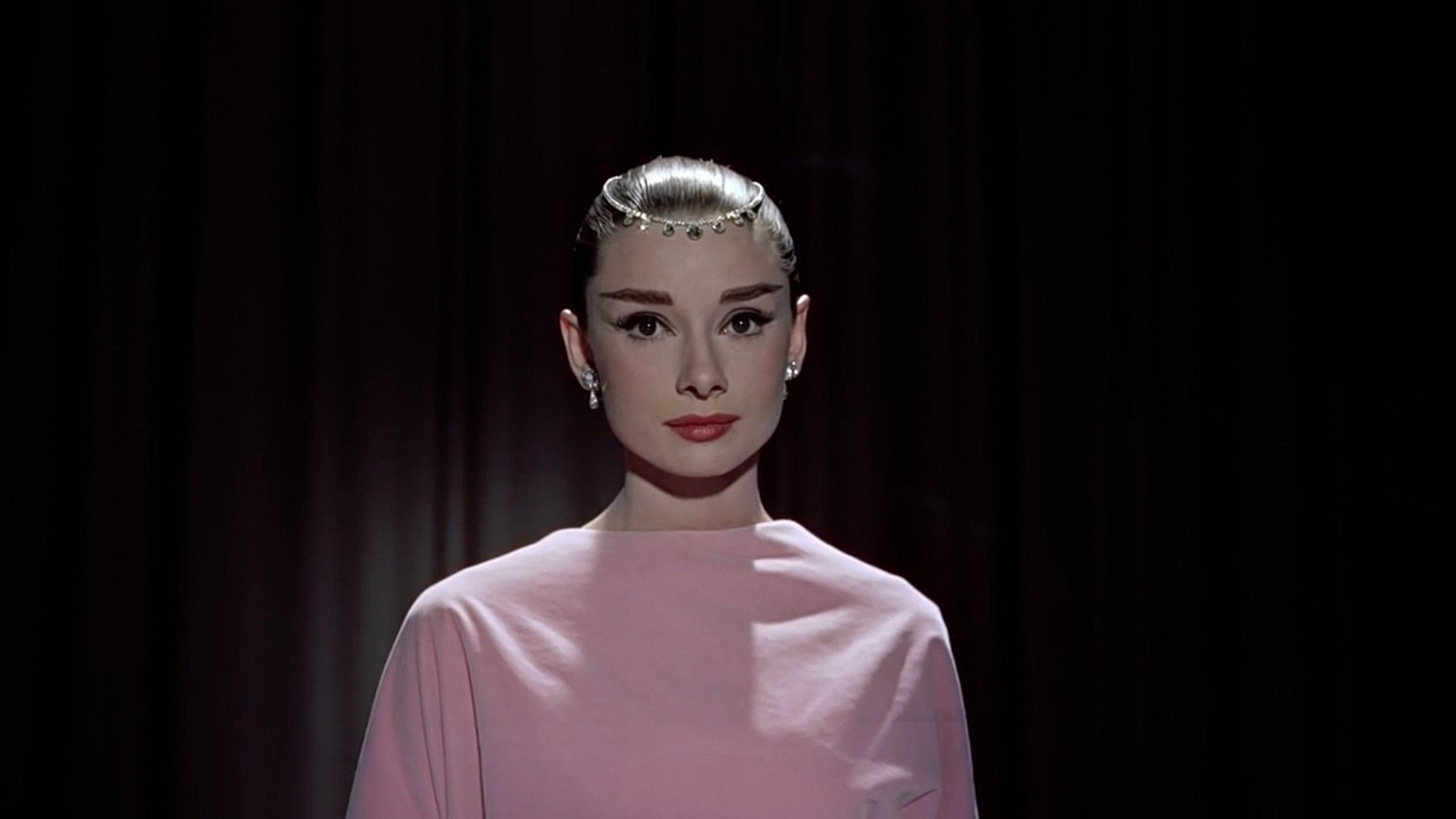
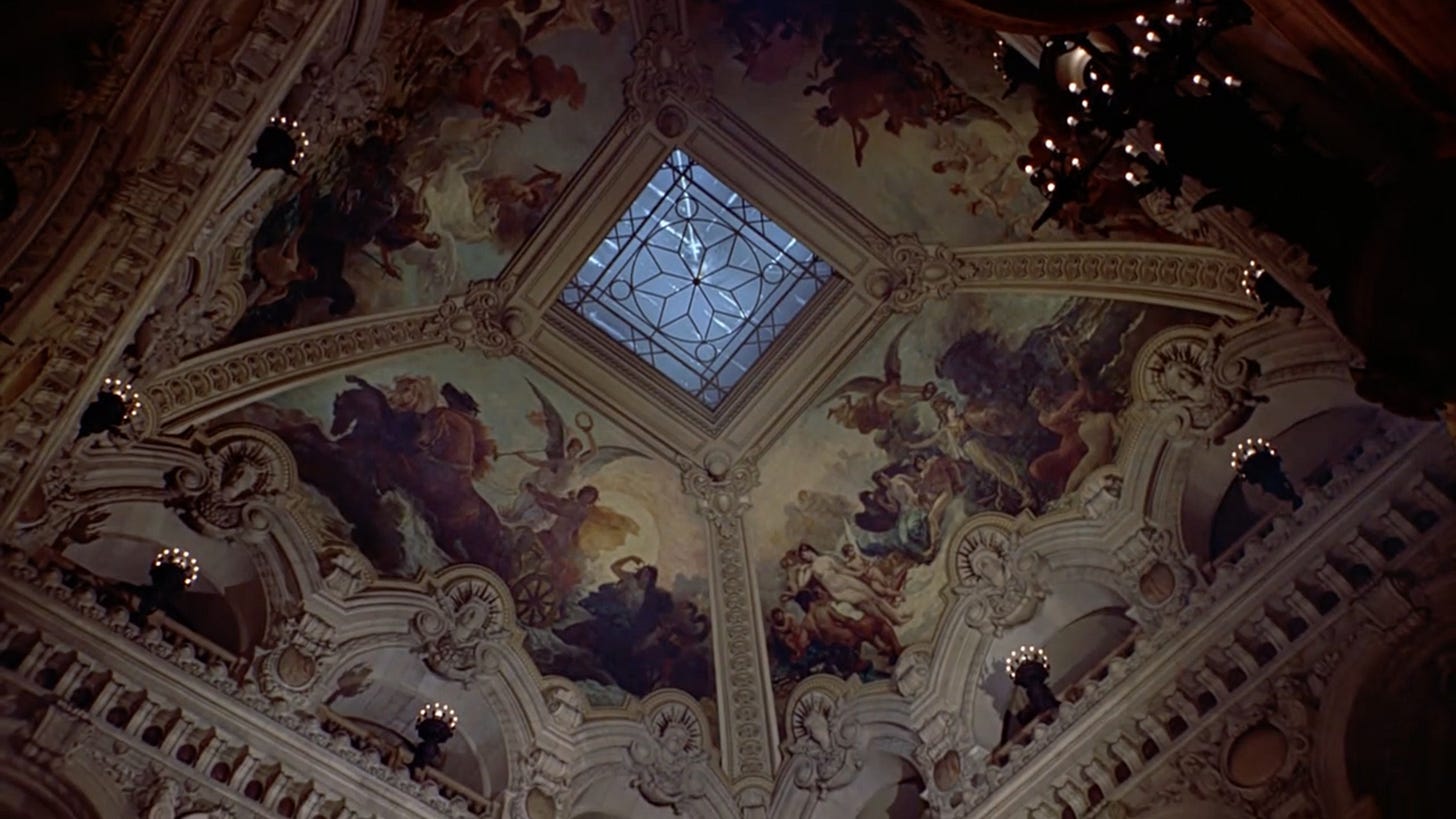
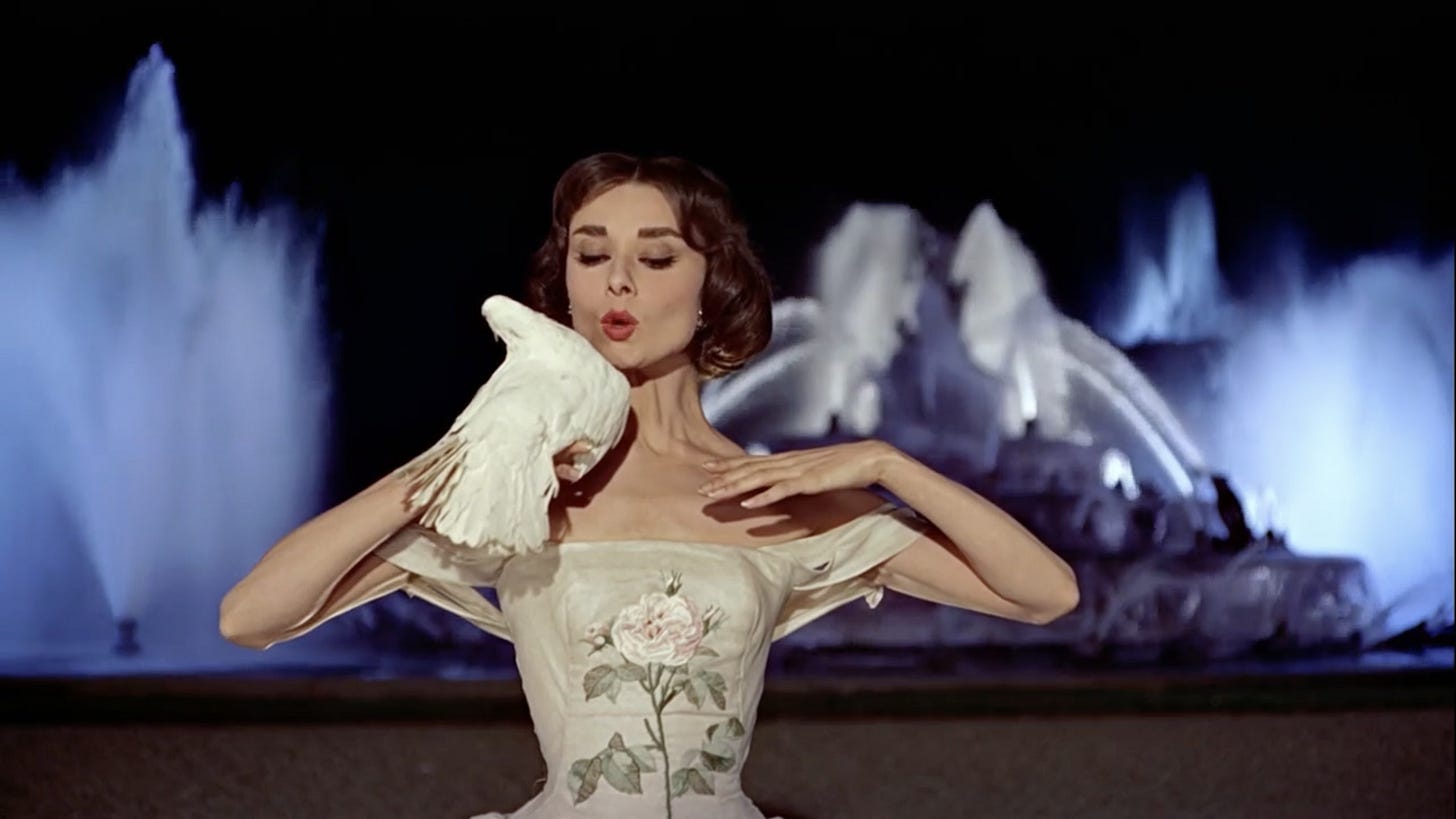

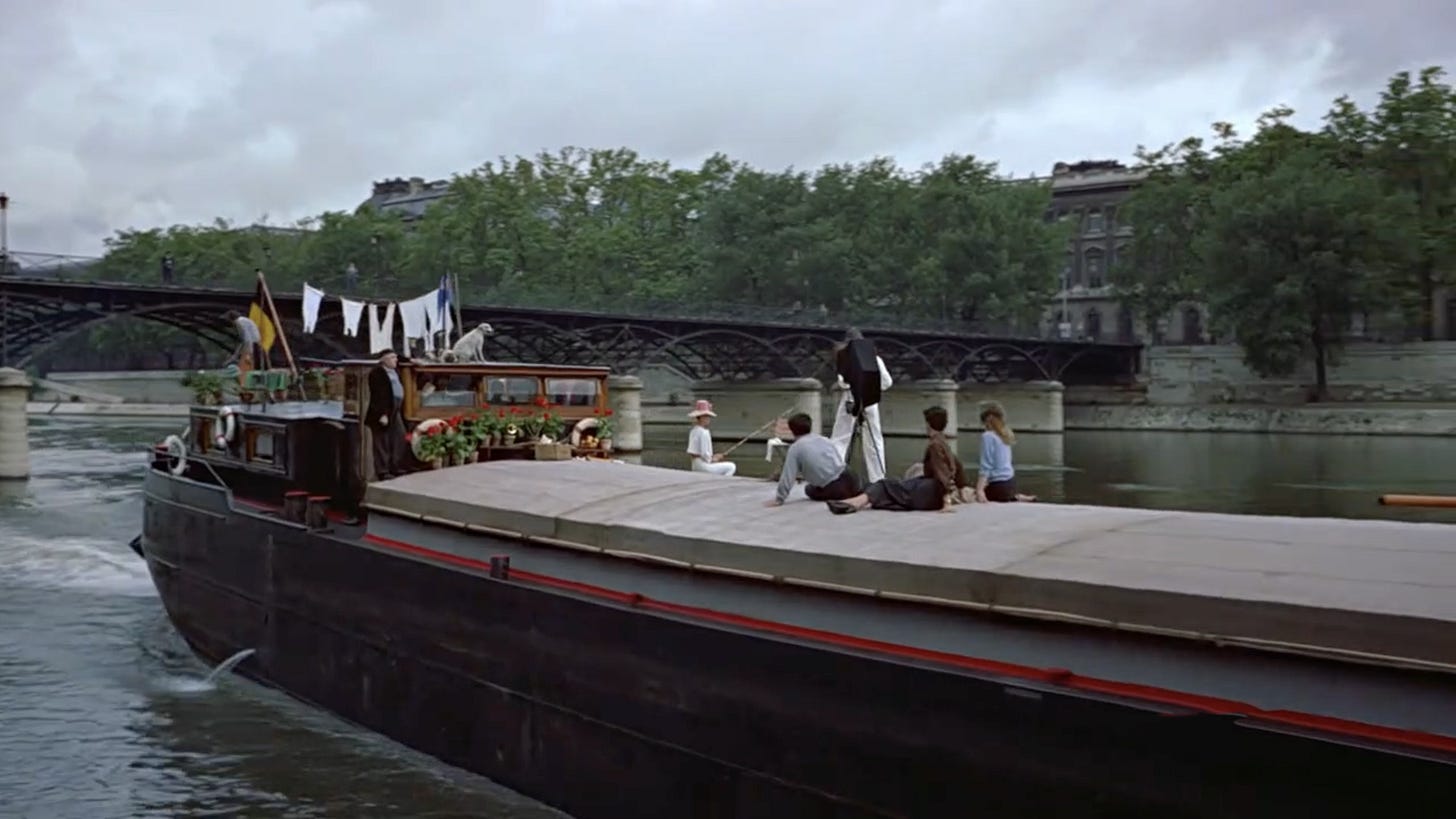
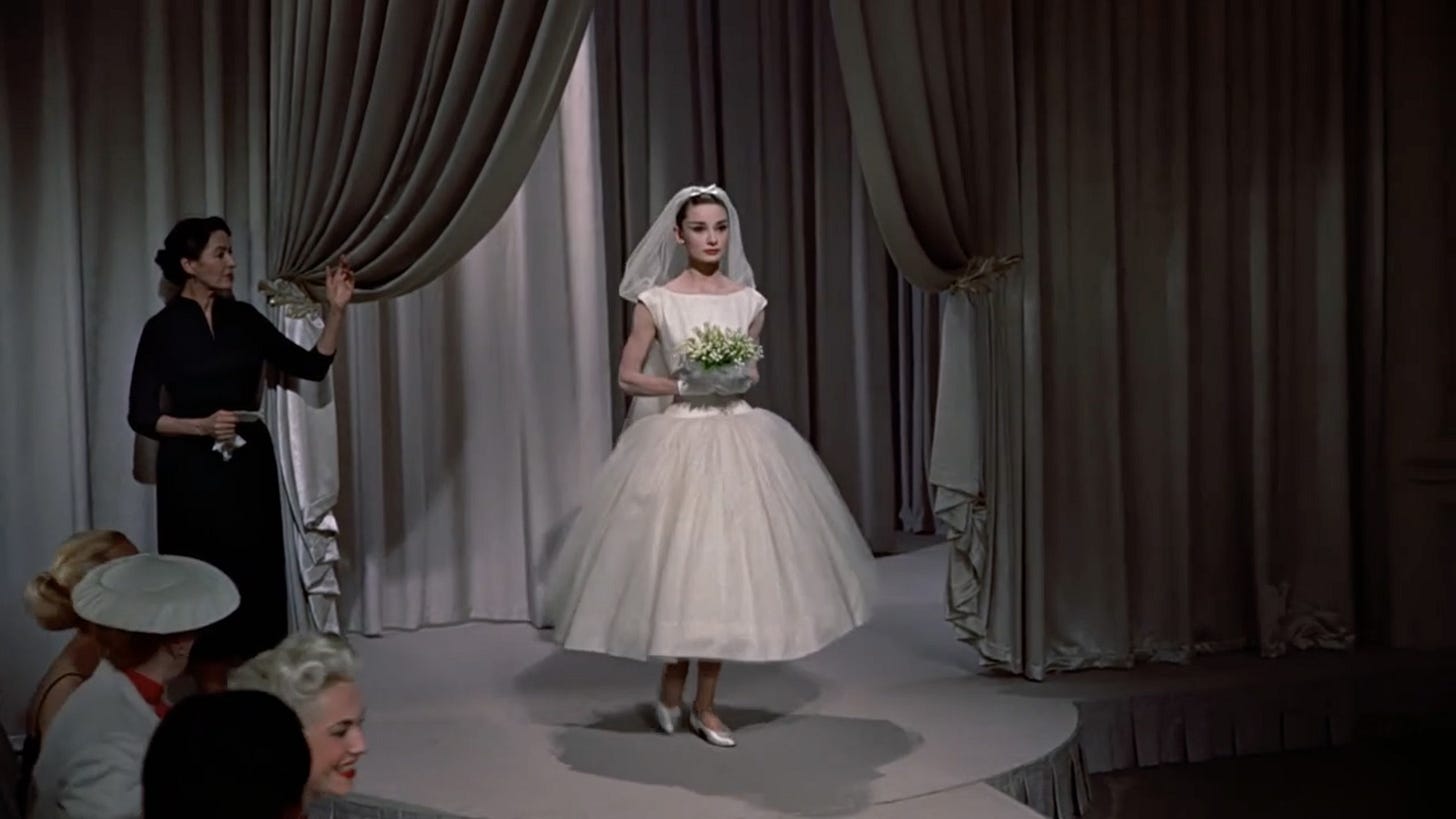

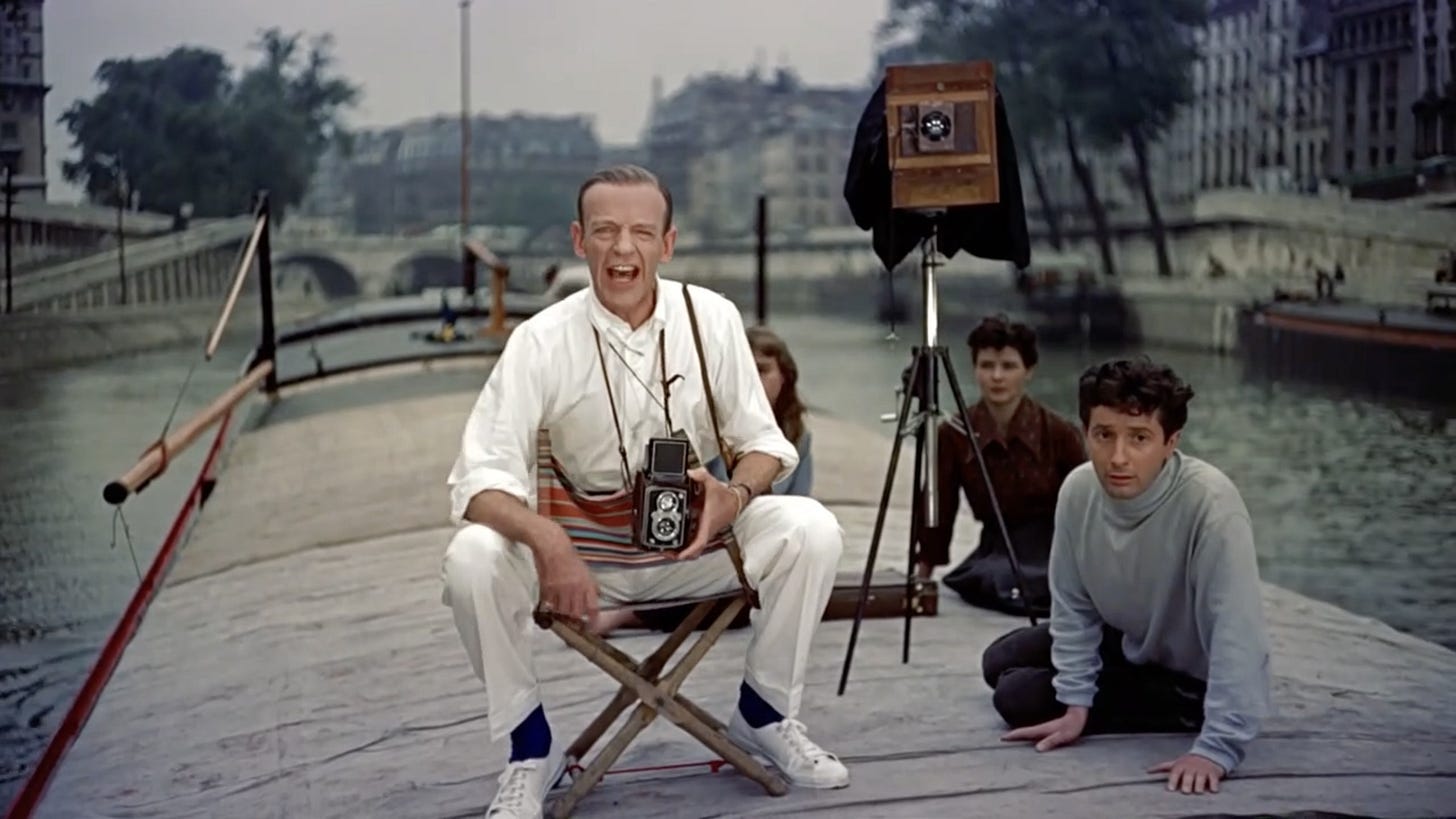
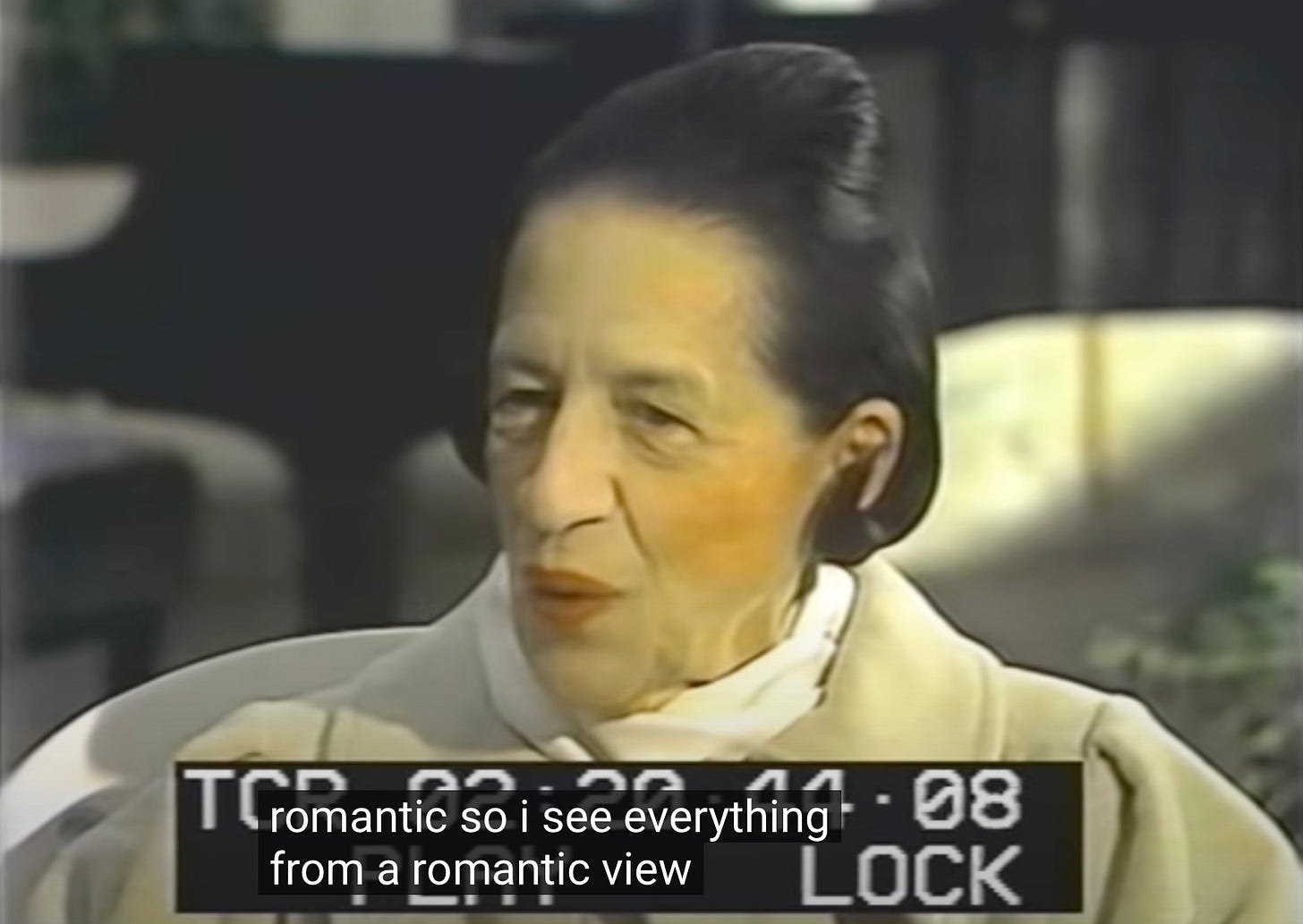
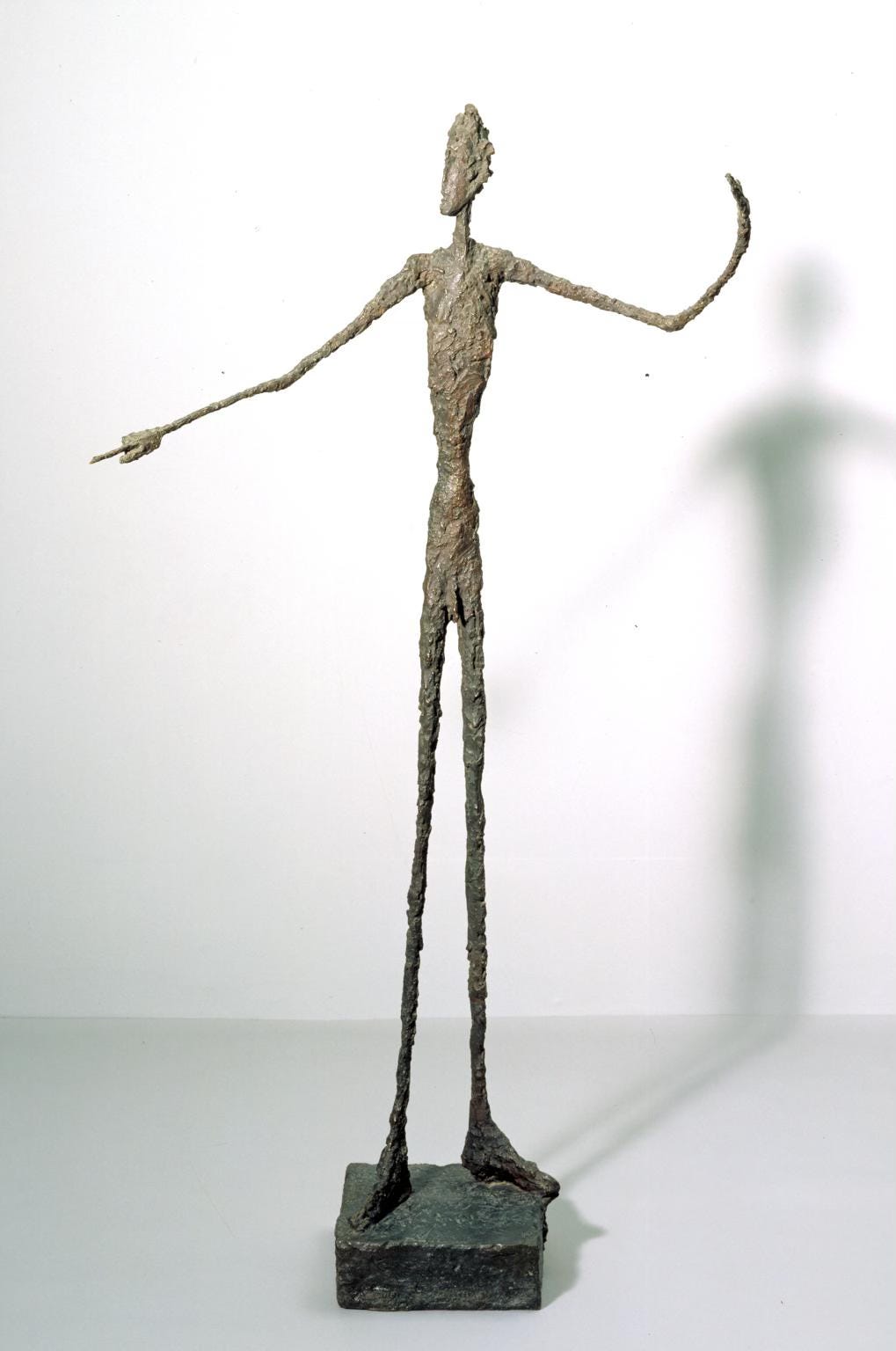
oh to be in the pre-easyjet era of Orly
Funny Face is one of my all-time faves, and agree with the rec for Two for the Road (absolutely underrated!!!). Will throw a vote in there for Love in the Afternoon, lesser-known and a little problématique, one might say; but released in the same year (1957), filmed on location in Paris, and is a fun watch.